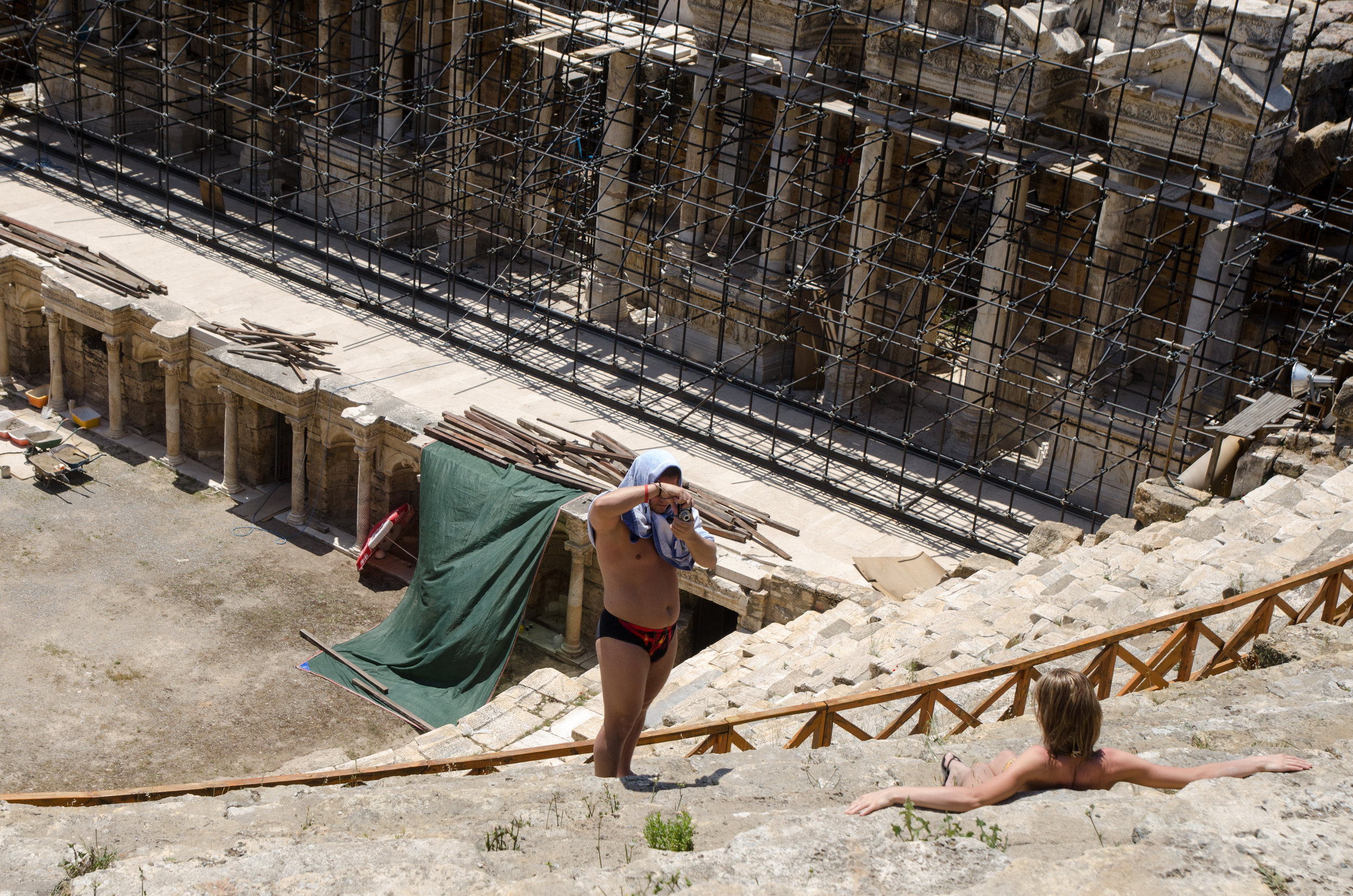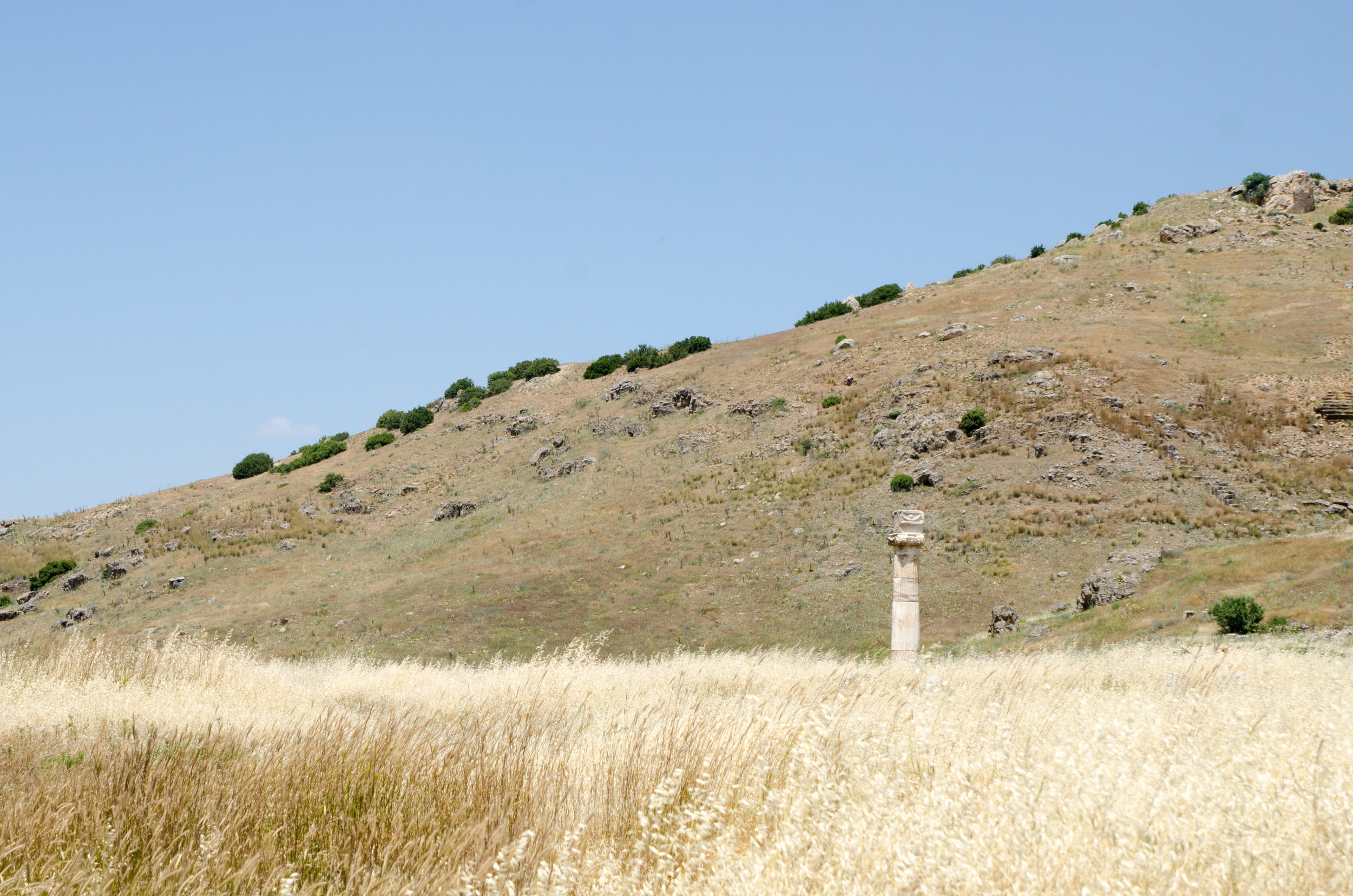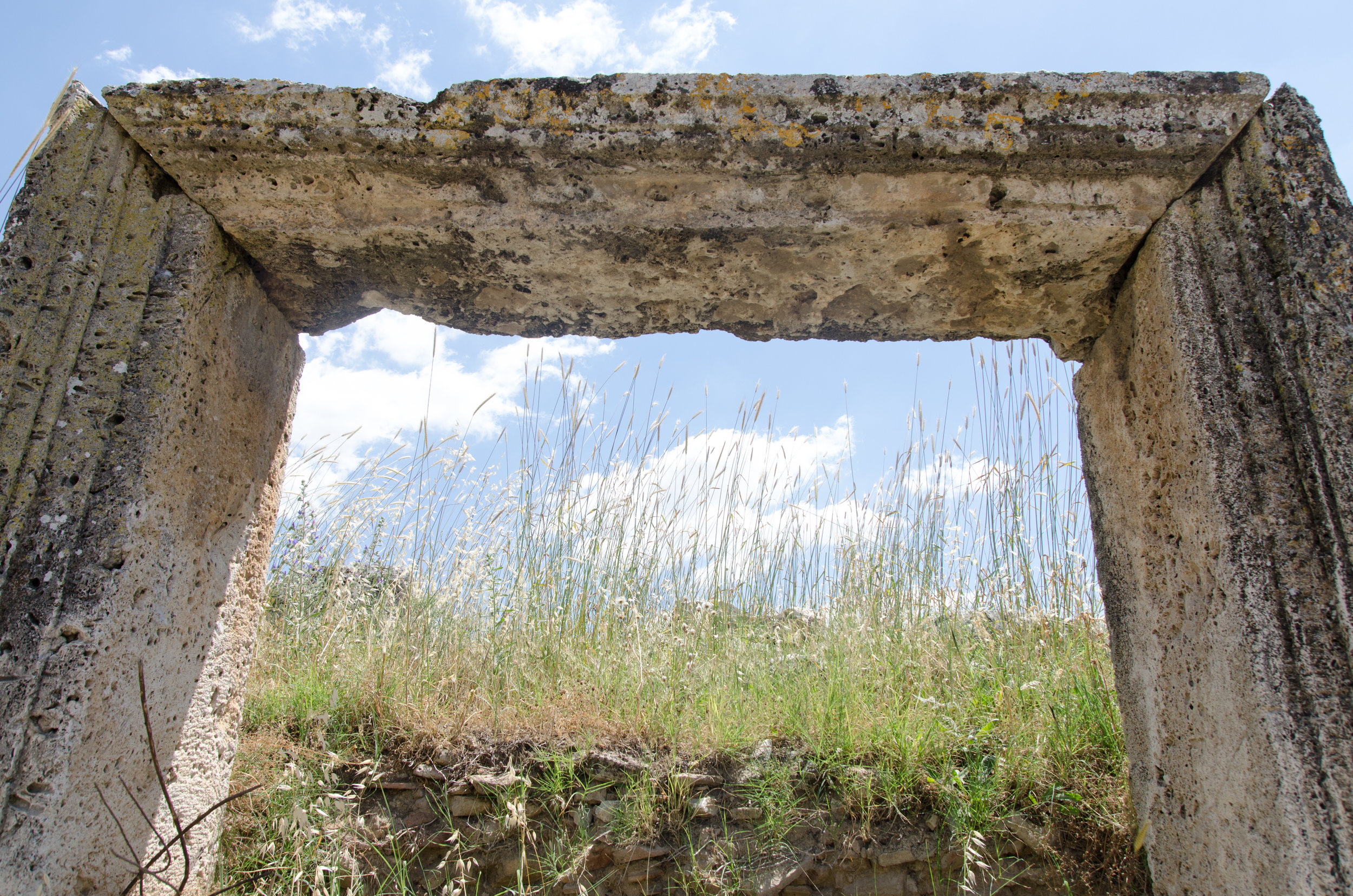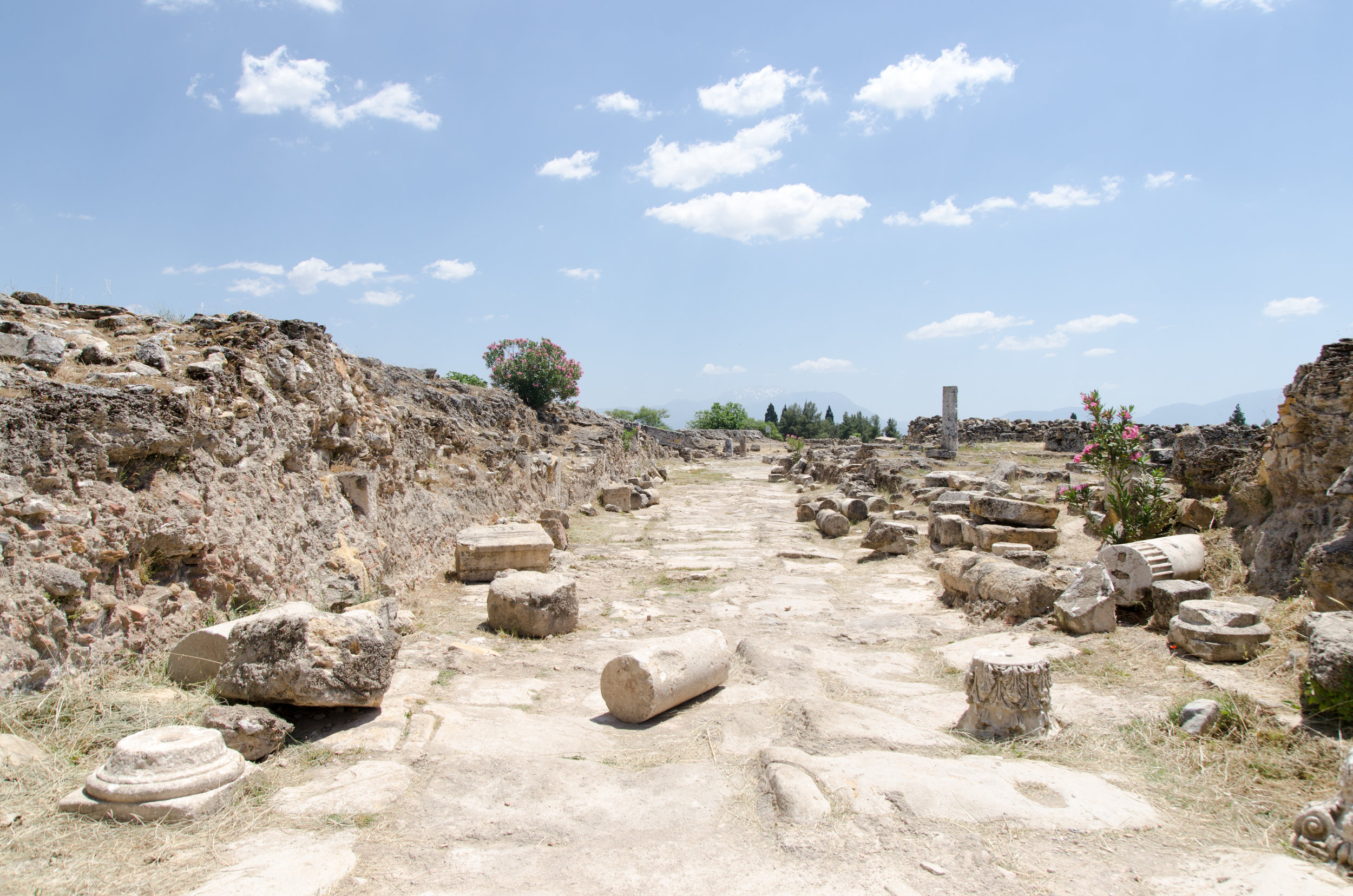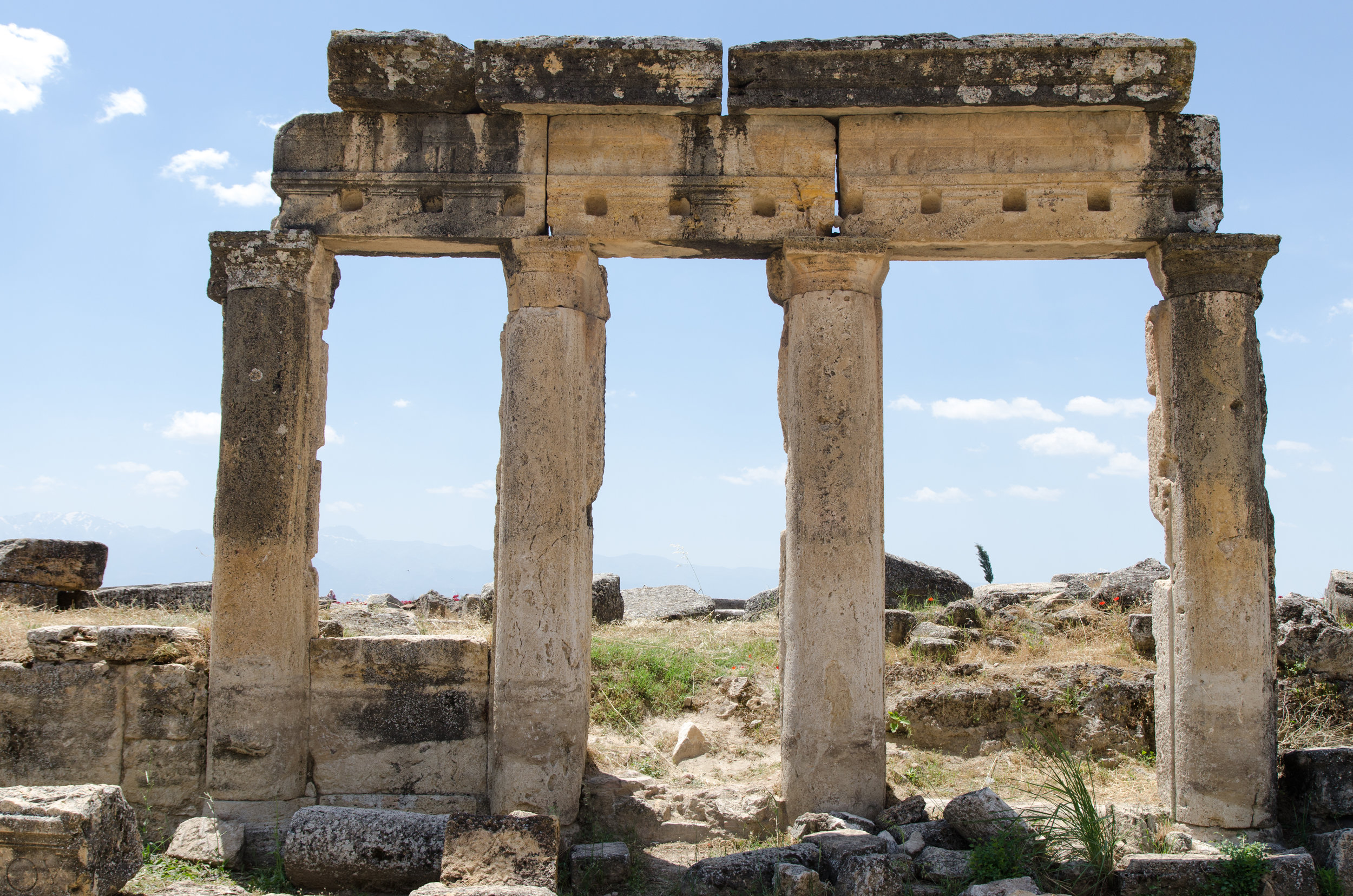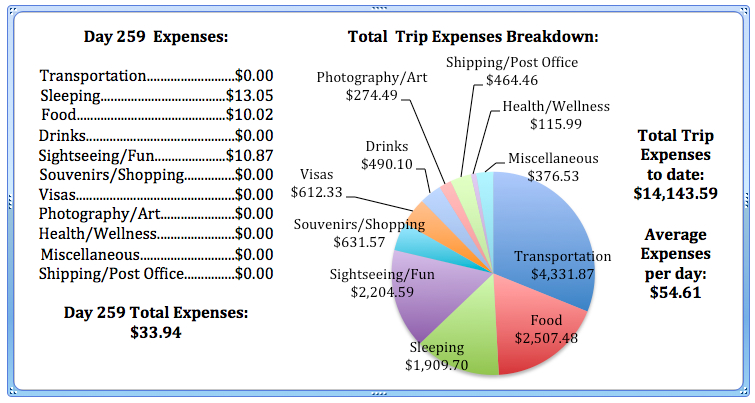Ephesus was an ancient Greek, then Roman city just outside of Selçuk in Turkey. We climbed a trail behind our guesthouse and then followed the road down to the back gate of the ancient city. It was calm and quiet until we arrived at the gate. Ephesus was packed. We were warned that cruise ships unloaded at nine, but it seemed that regular bus tours unloaded around ten thirty, when we arrived. We tried to wait out the groups, sitting in the theater, people watching. But it didn’t seem to matter, groups and groups of people continued to stream in, so we eventually got up and made our way through the surprisingly big city!
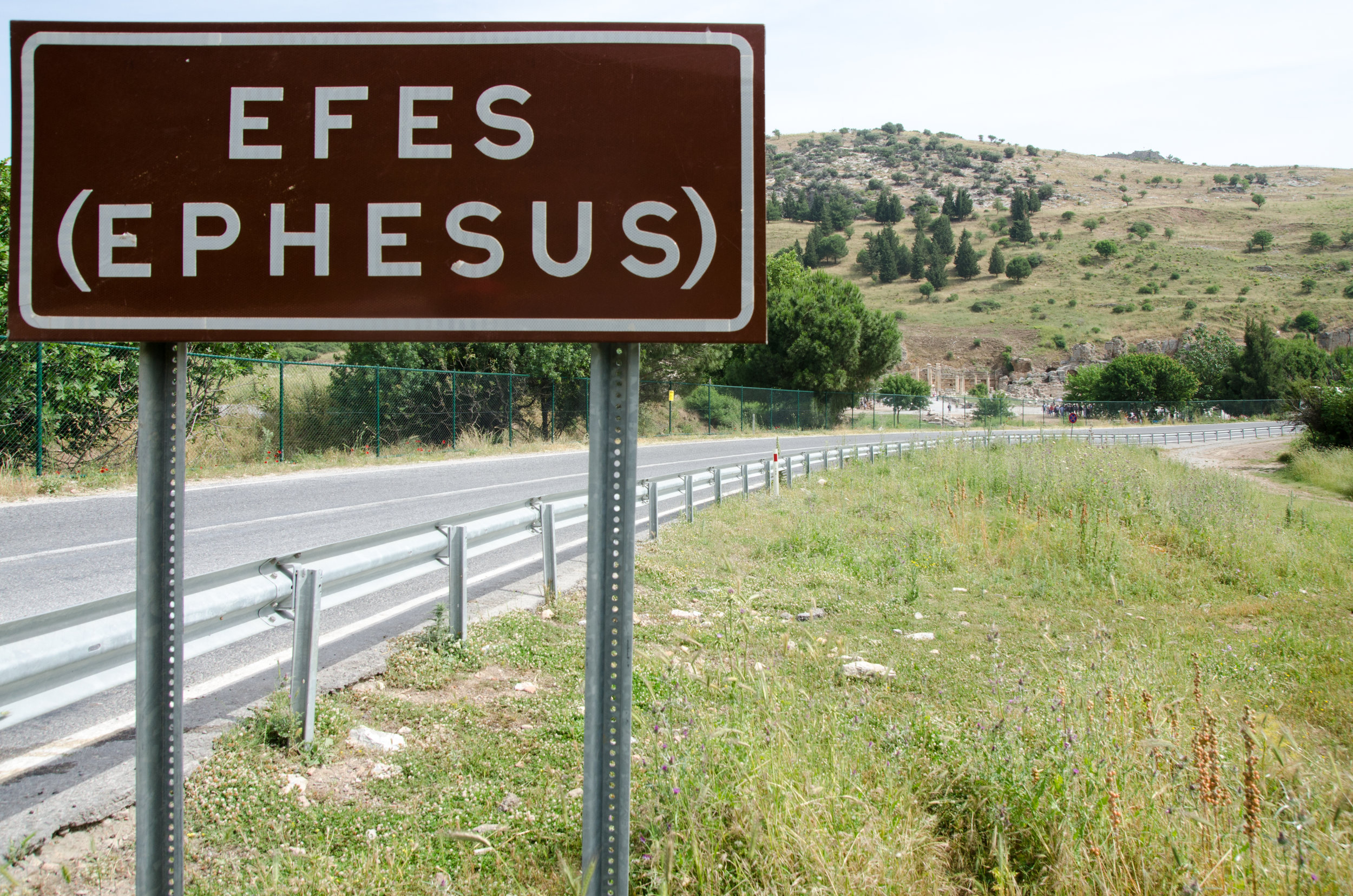
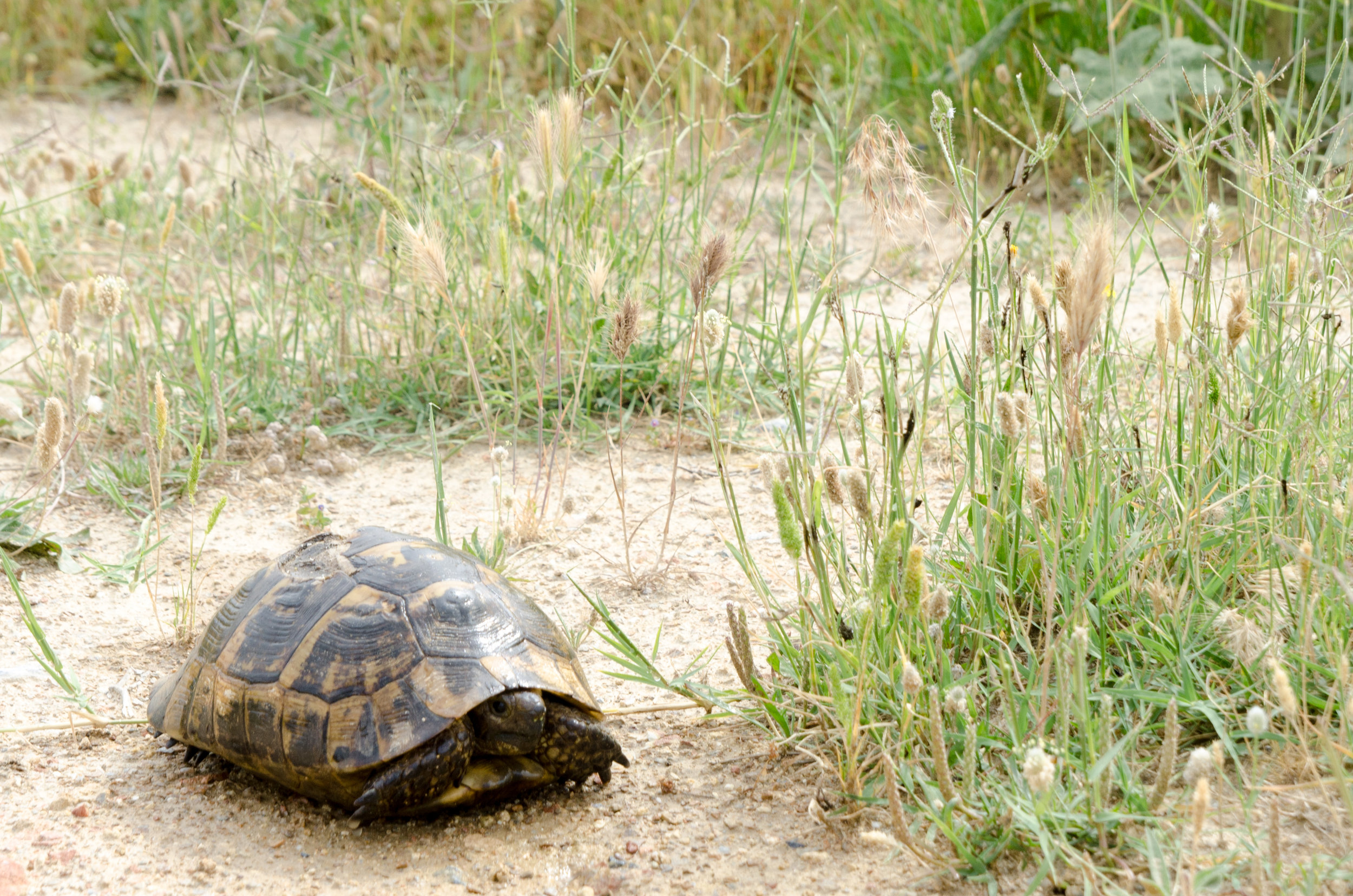
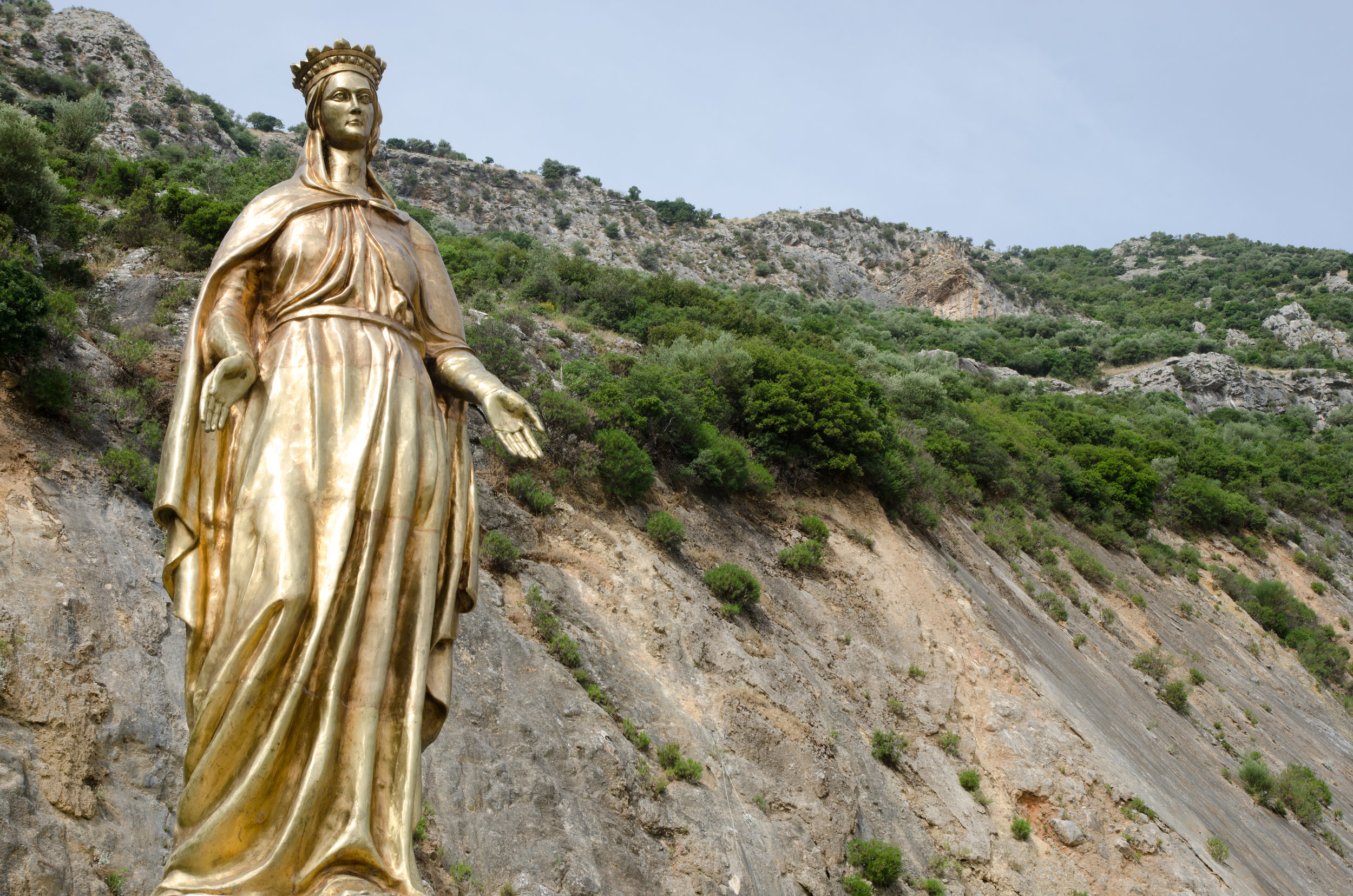
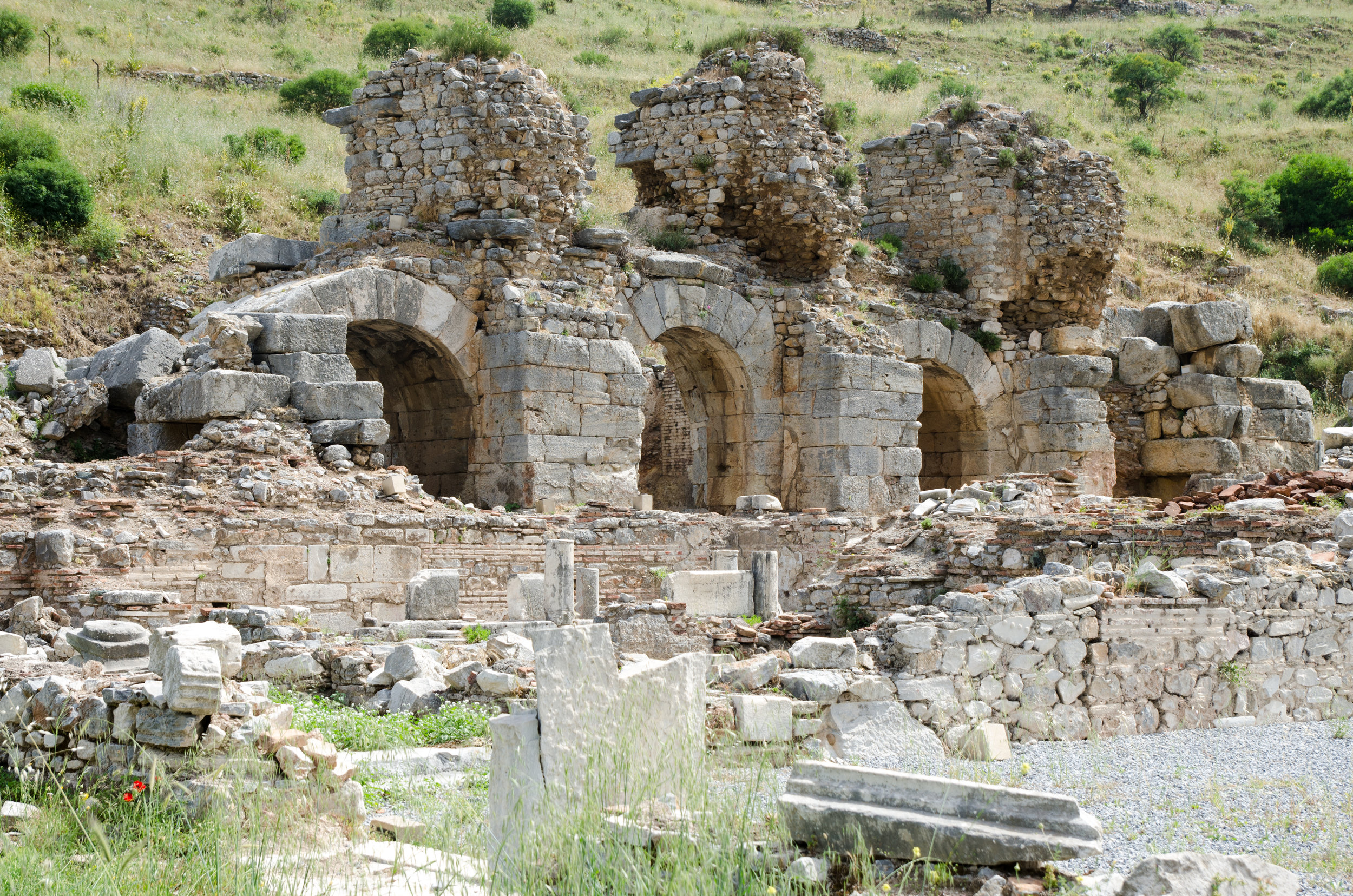
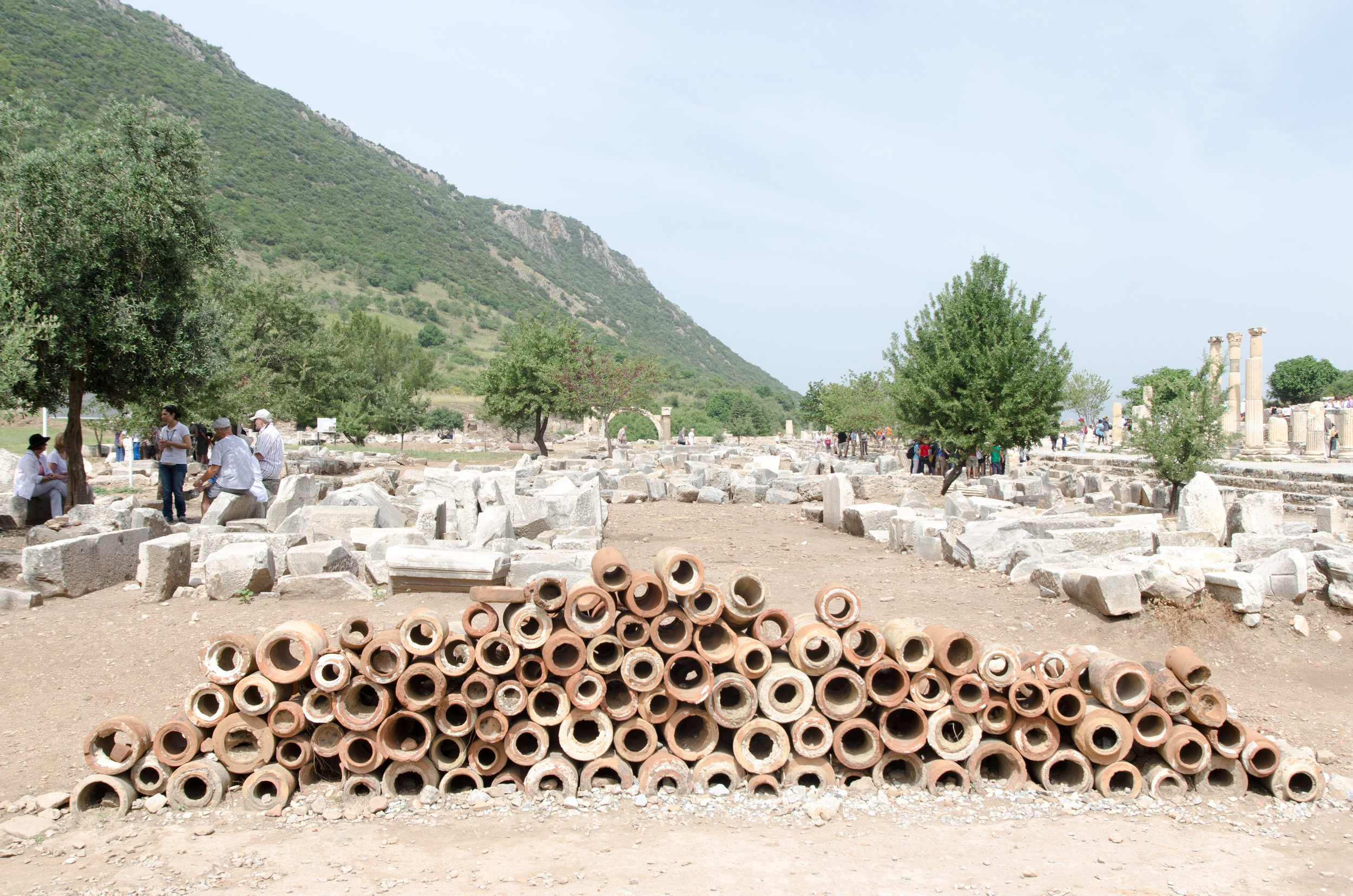
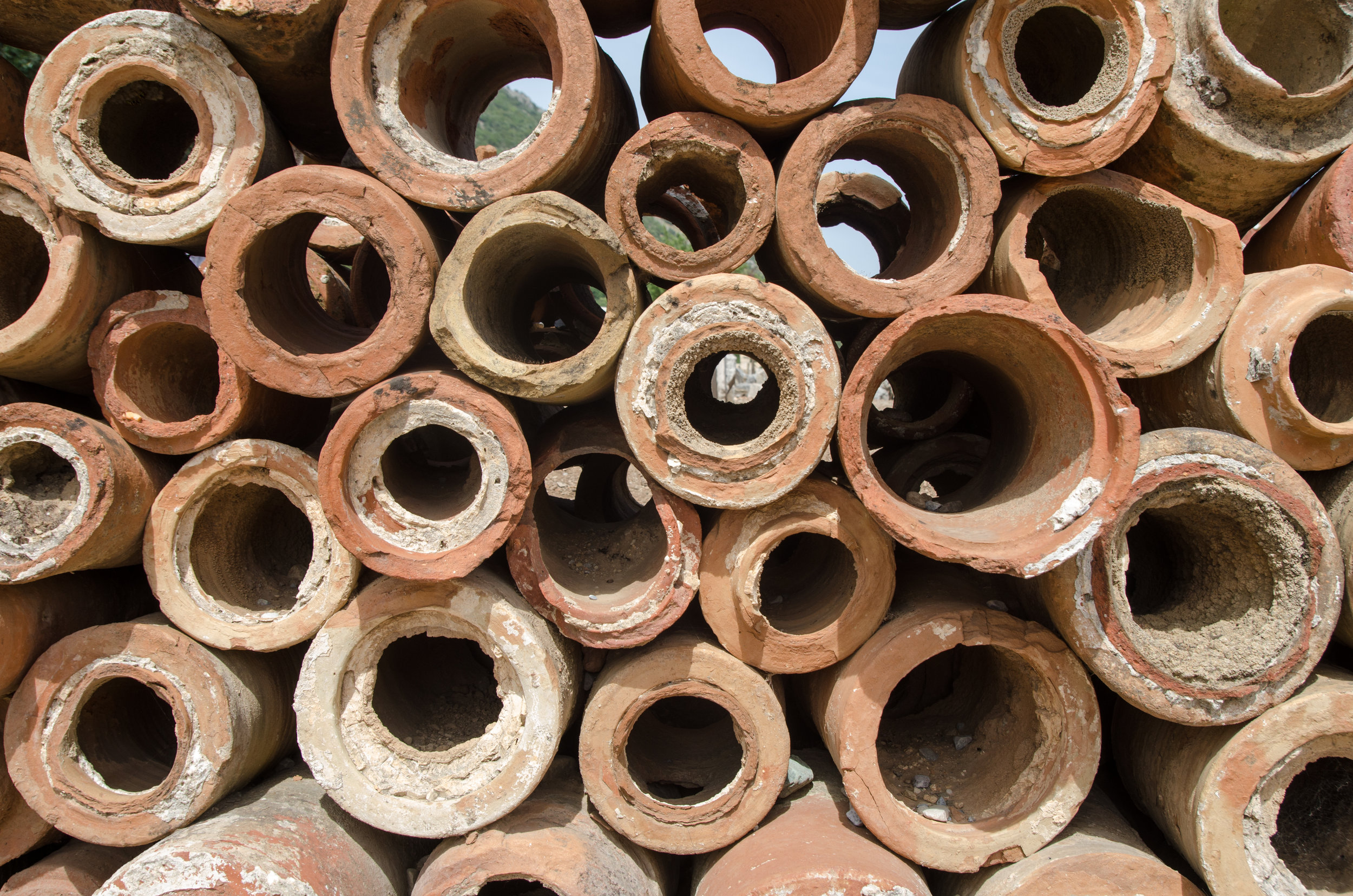
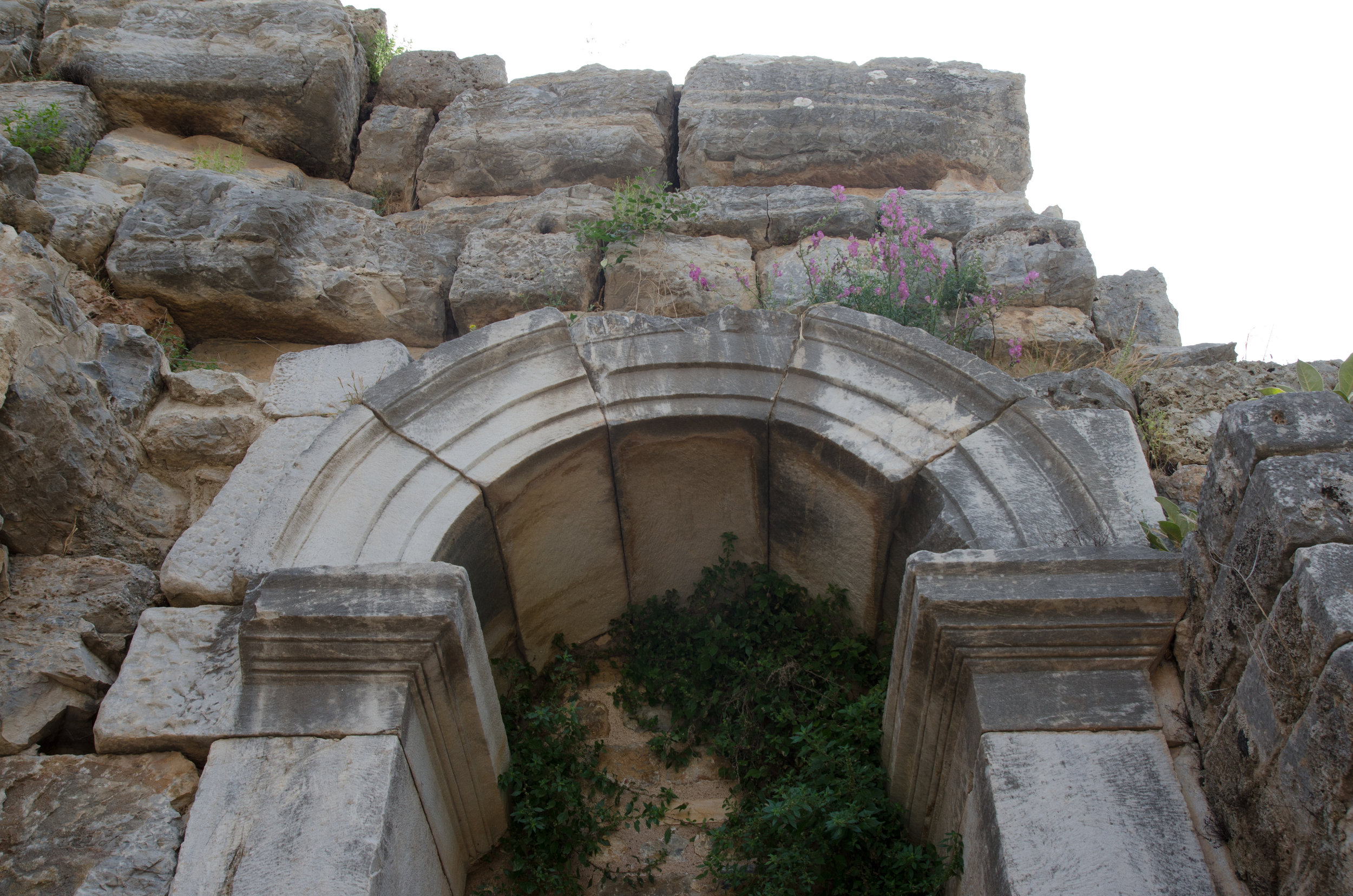
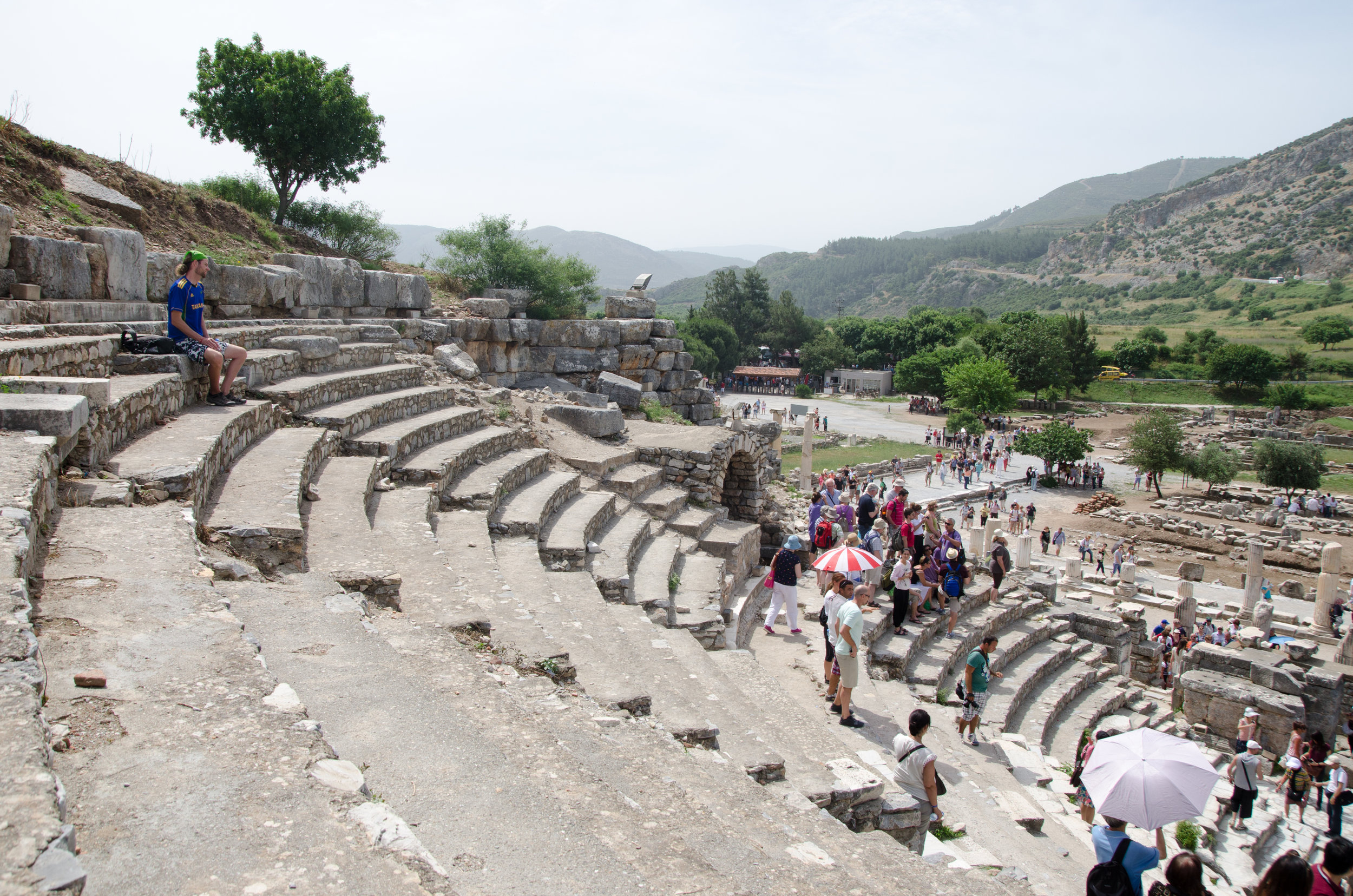
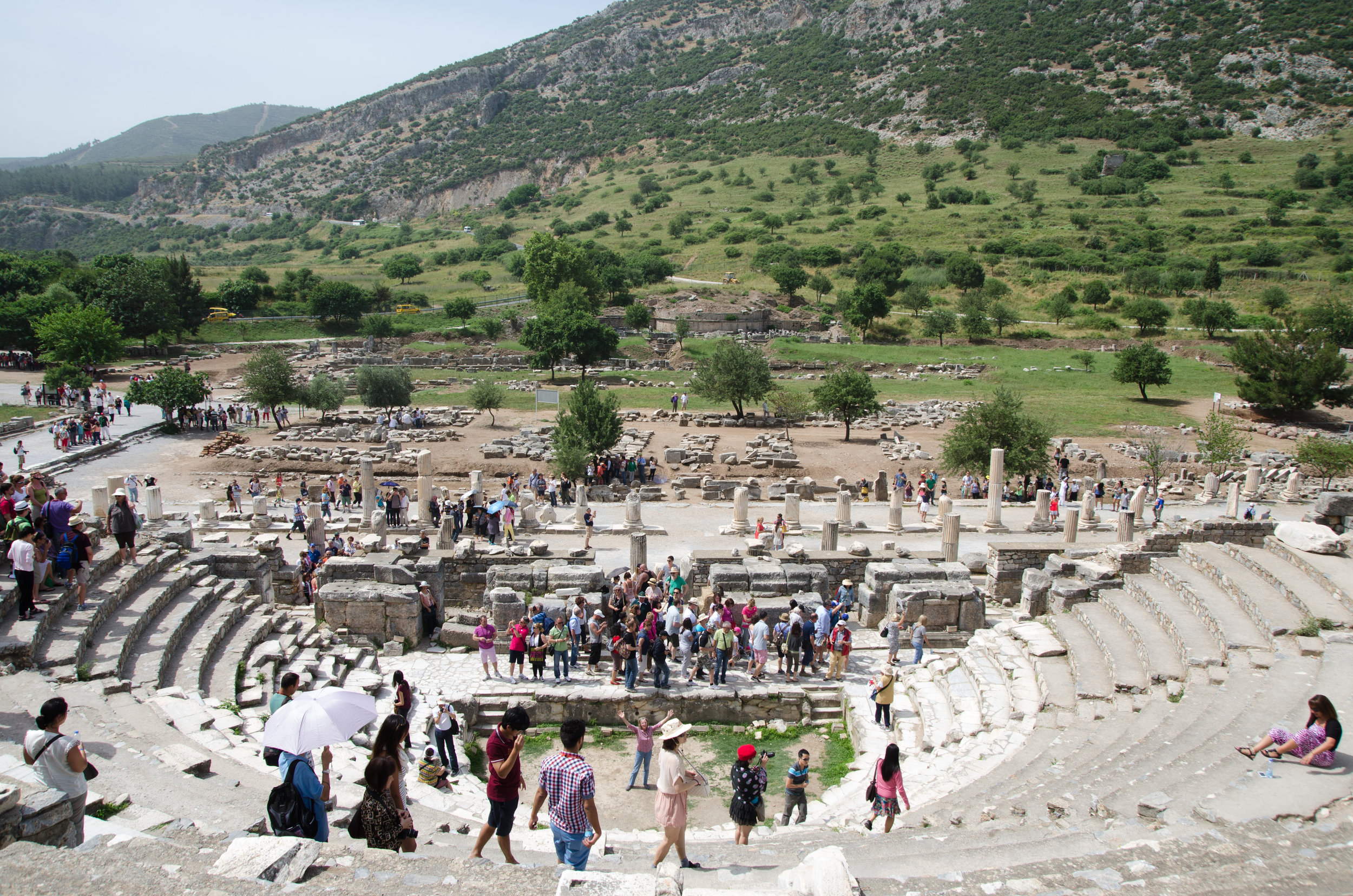

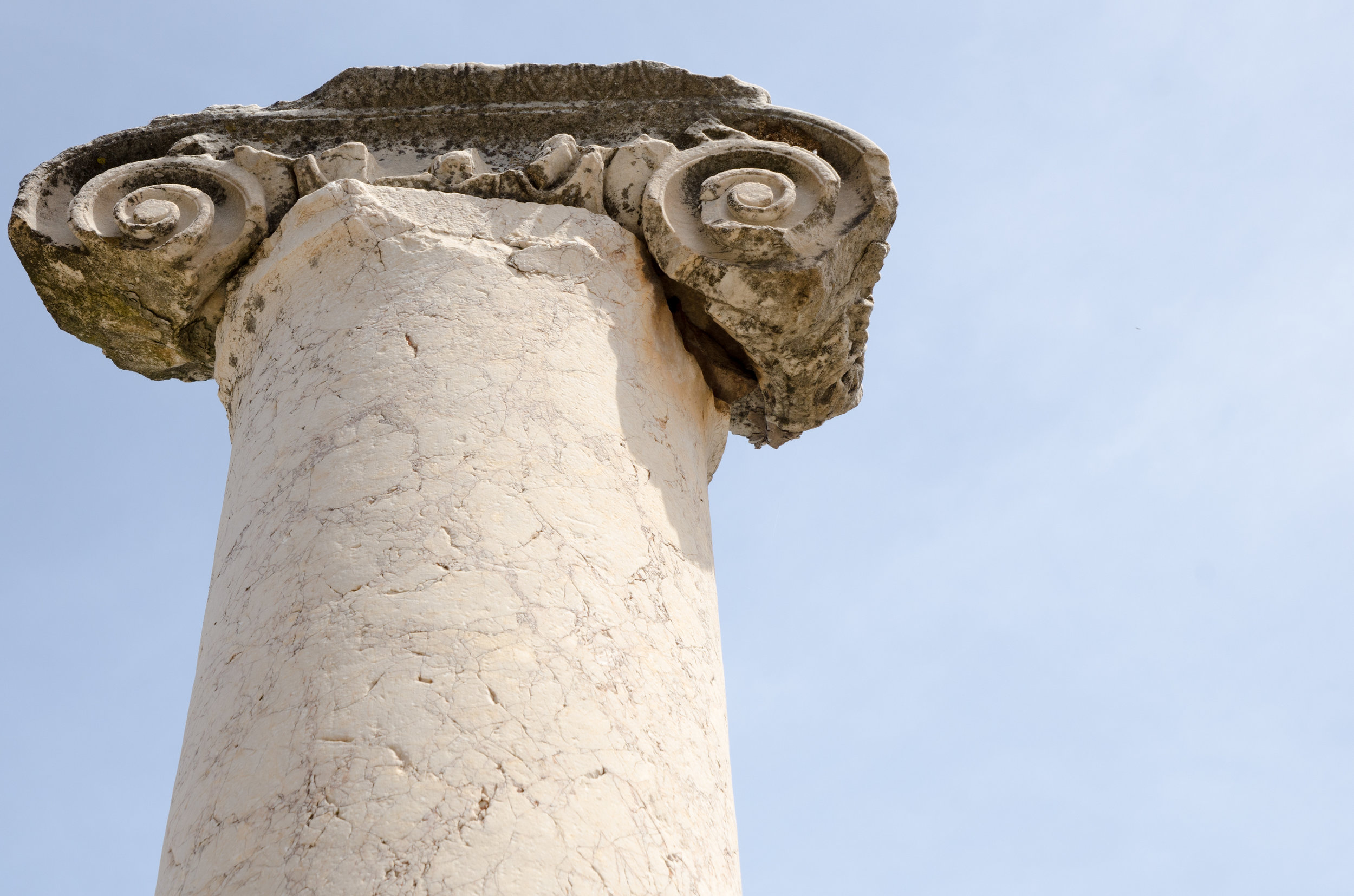
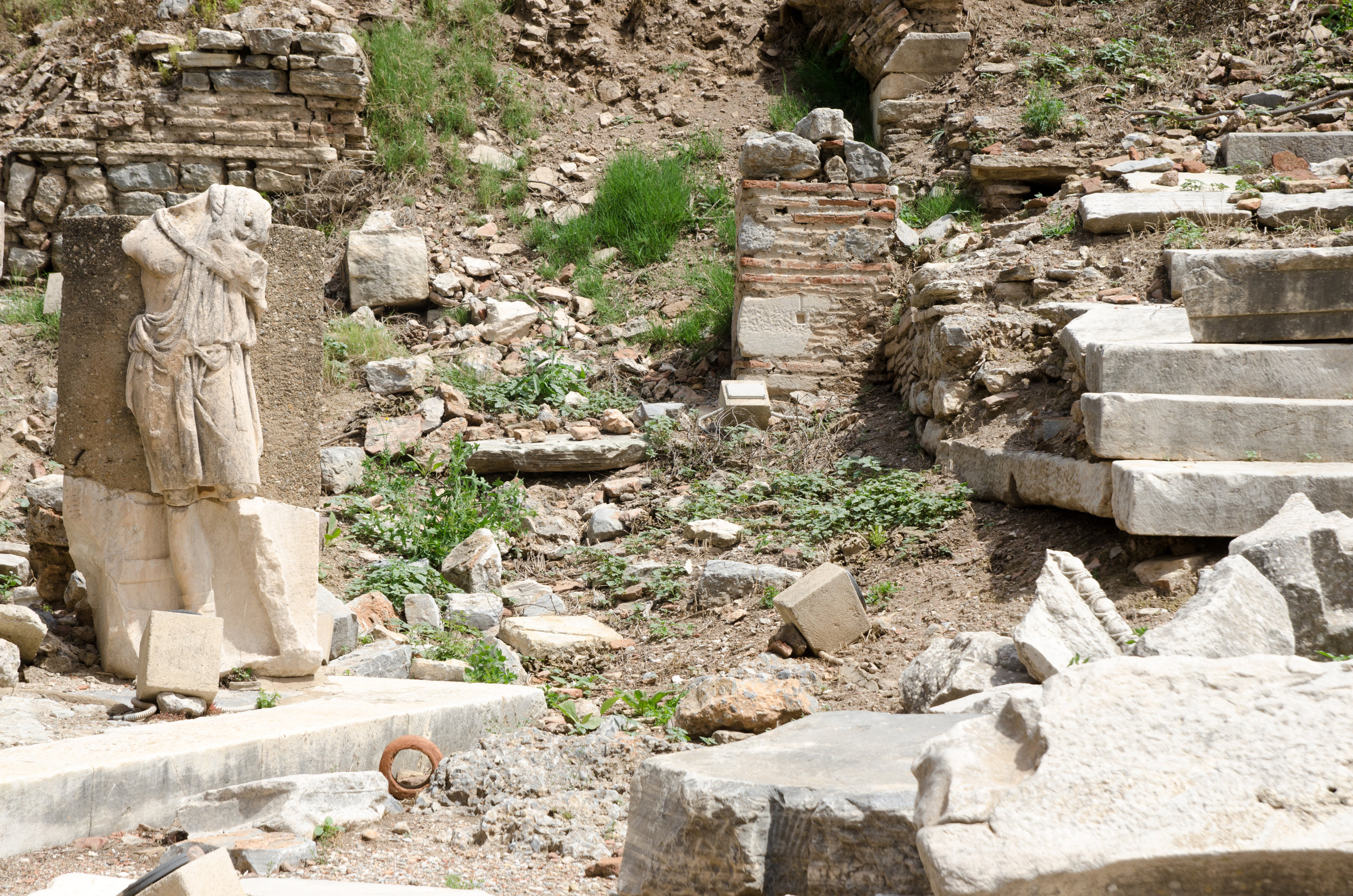
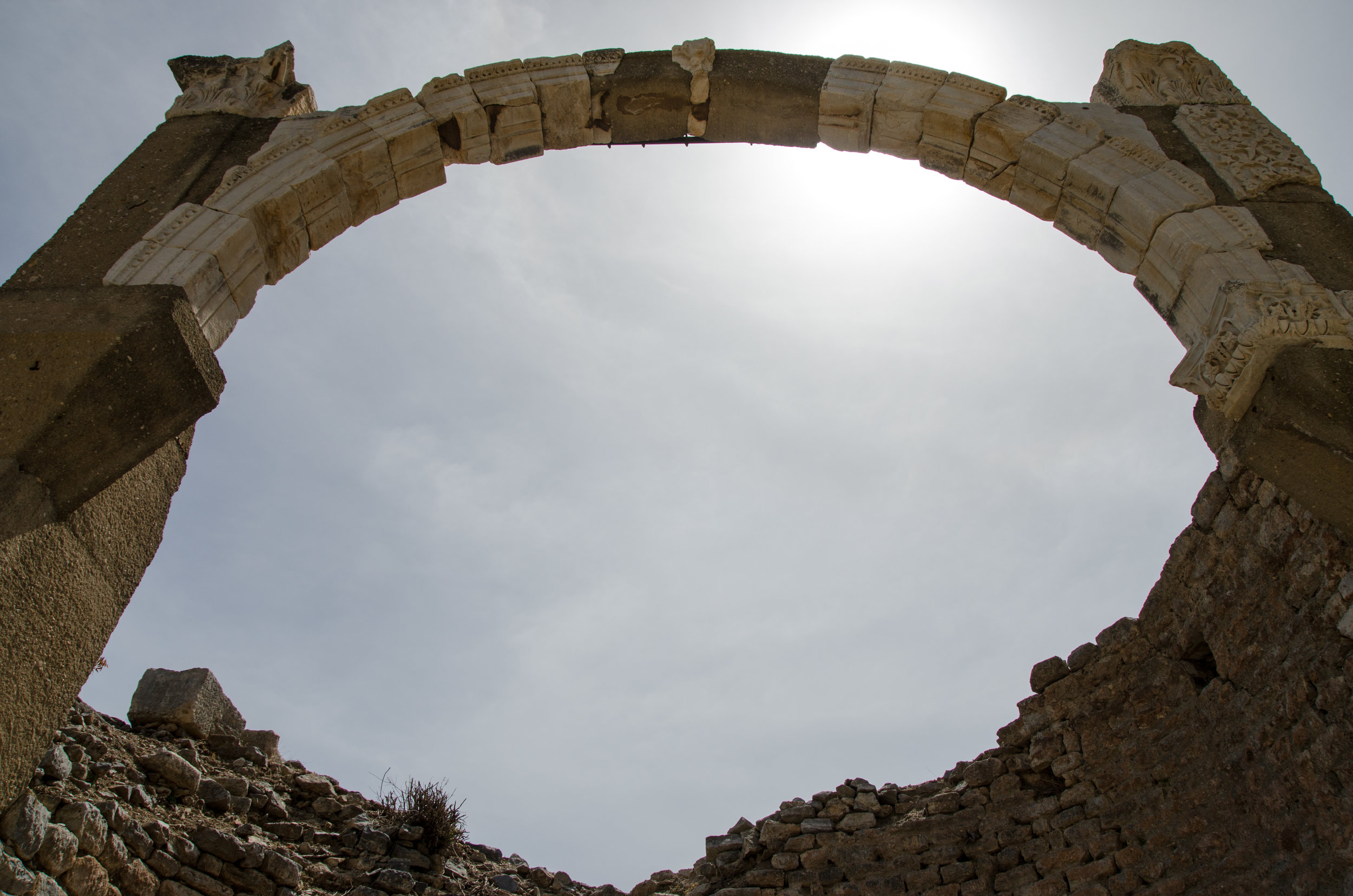
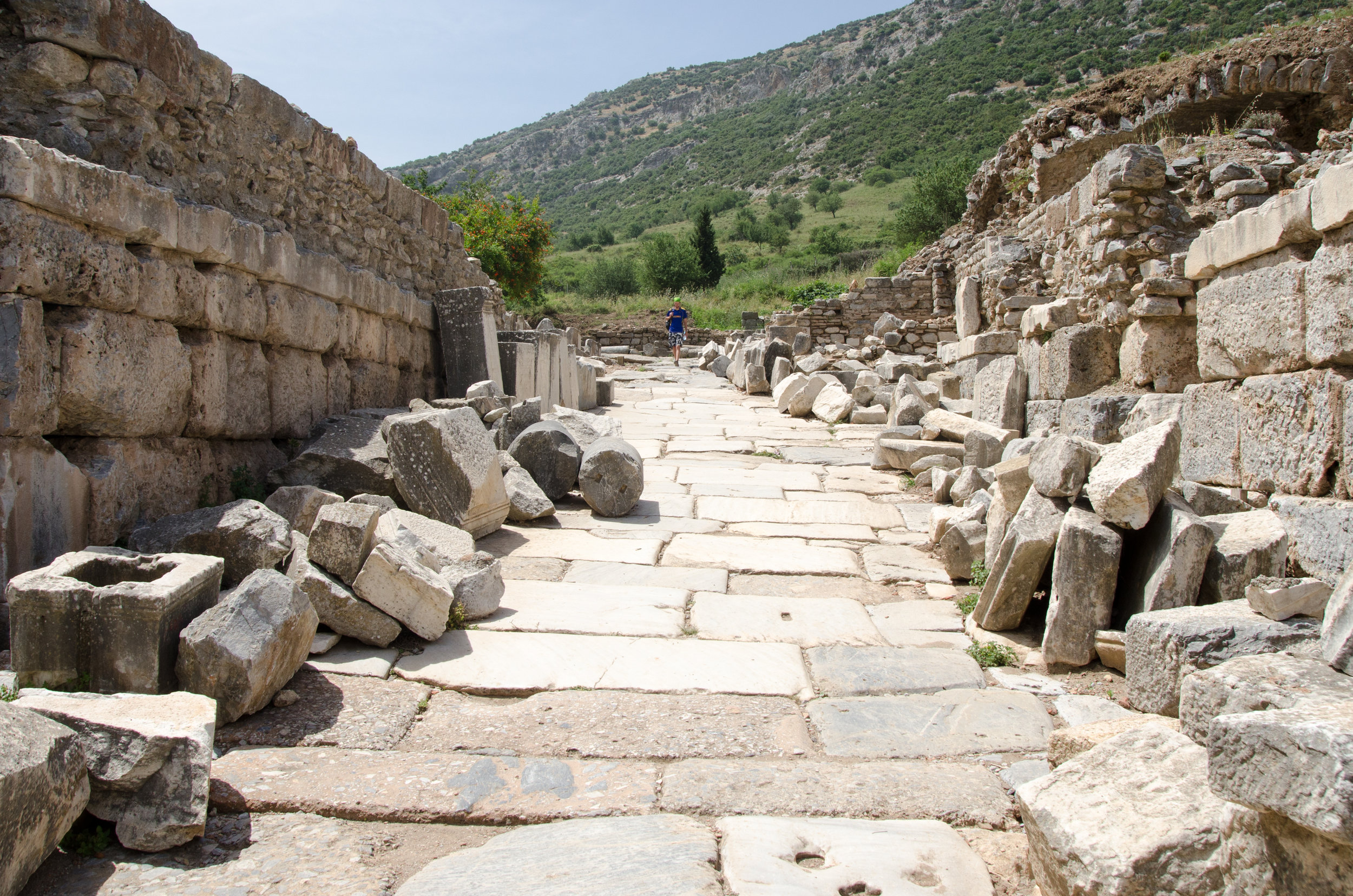
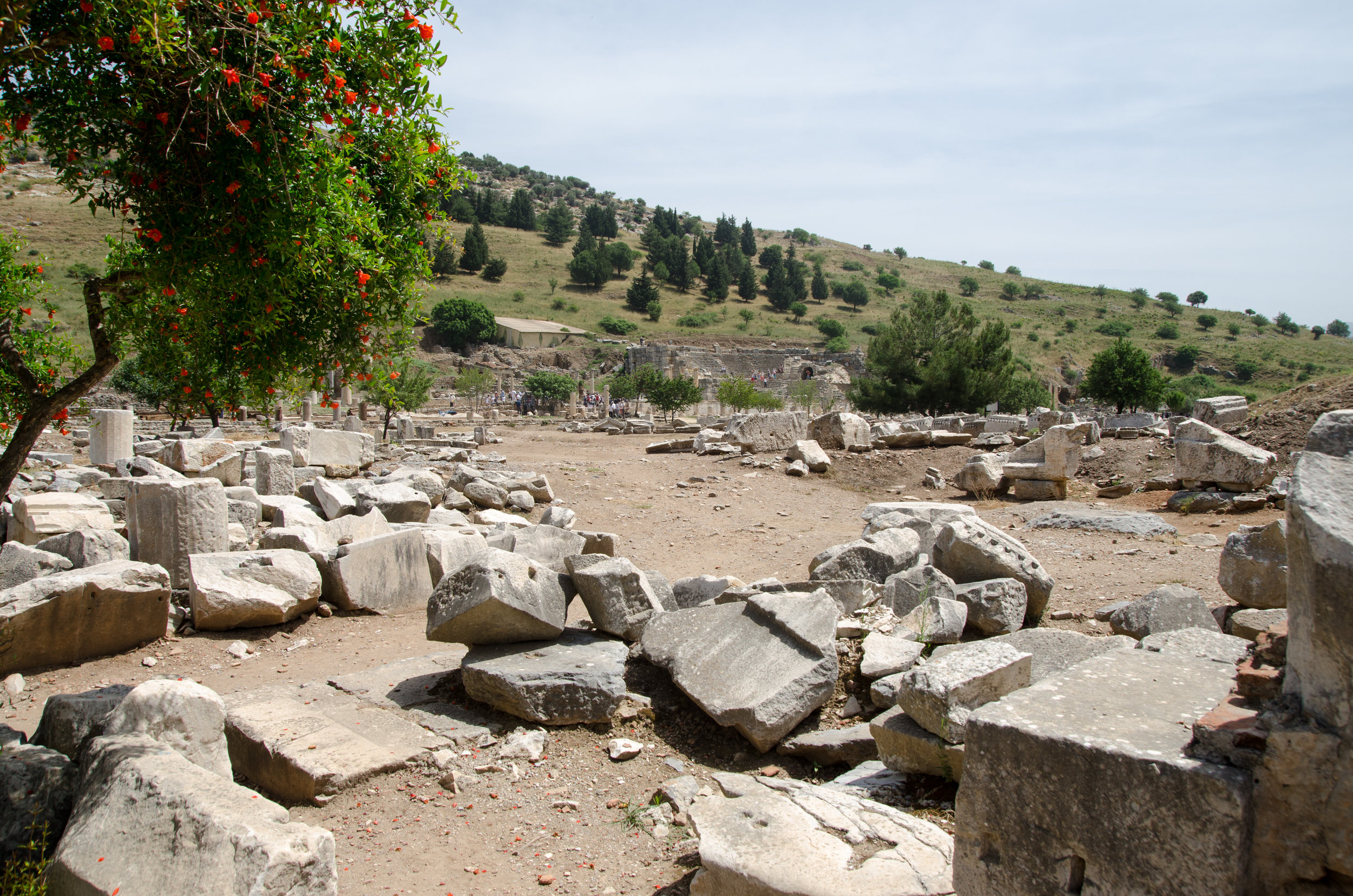
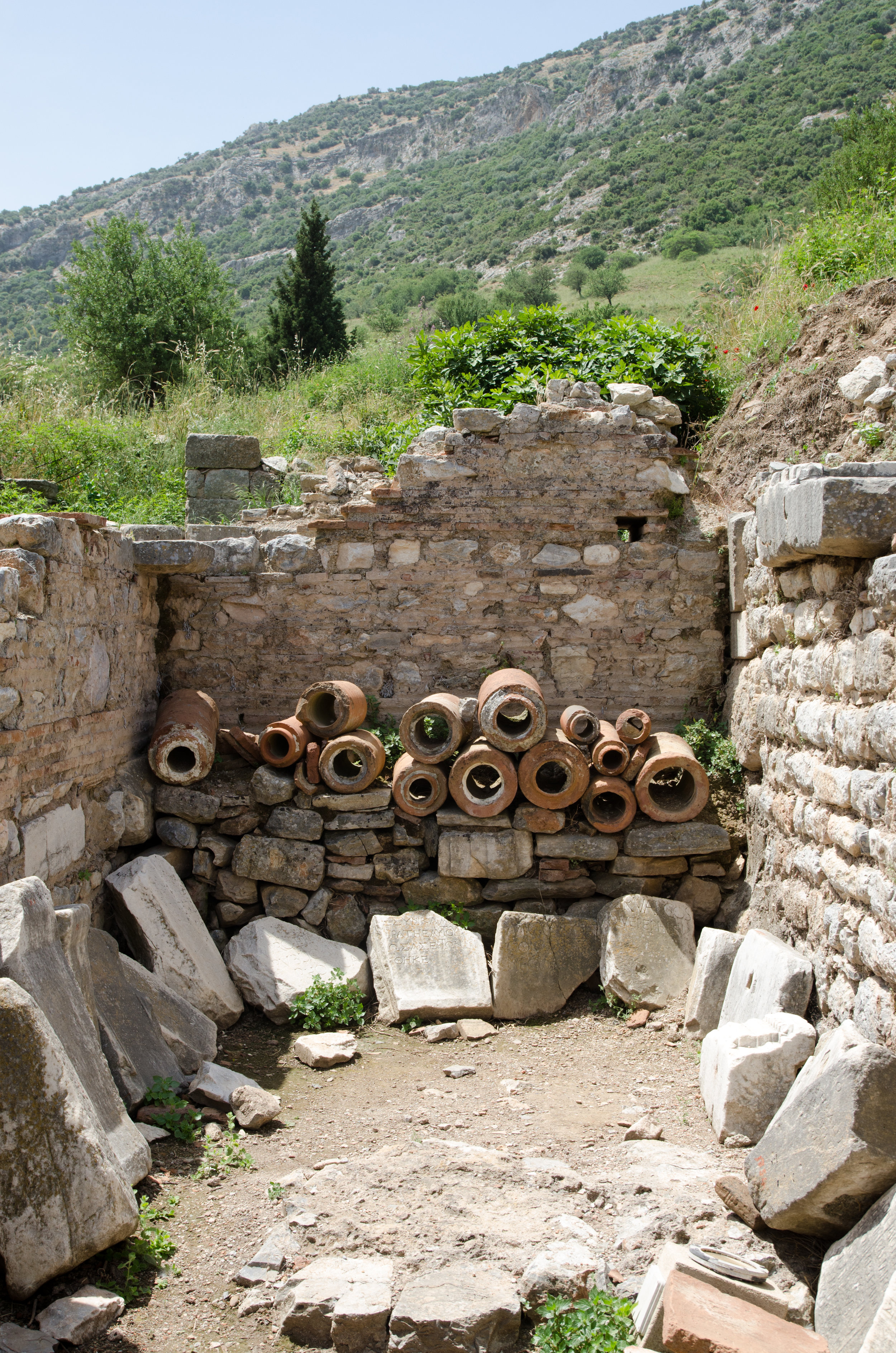

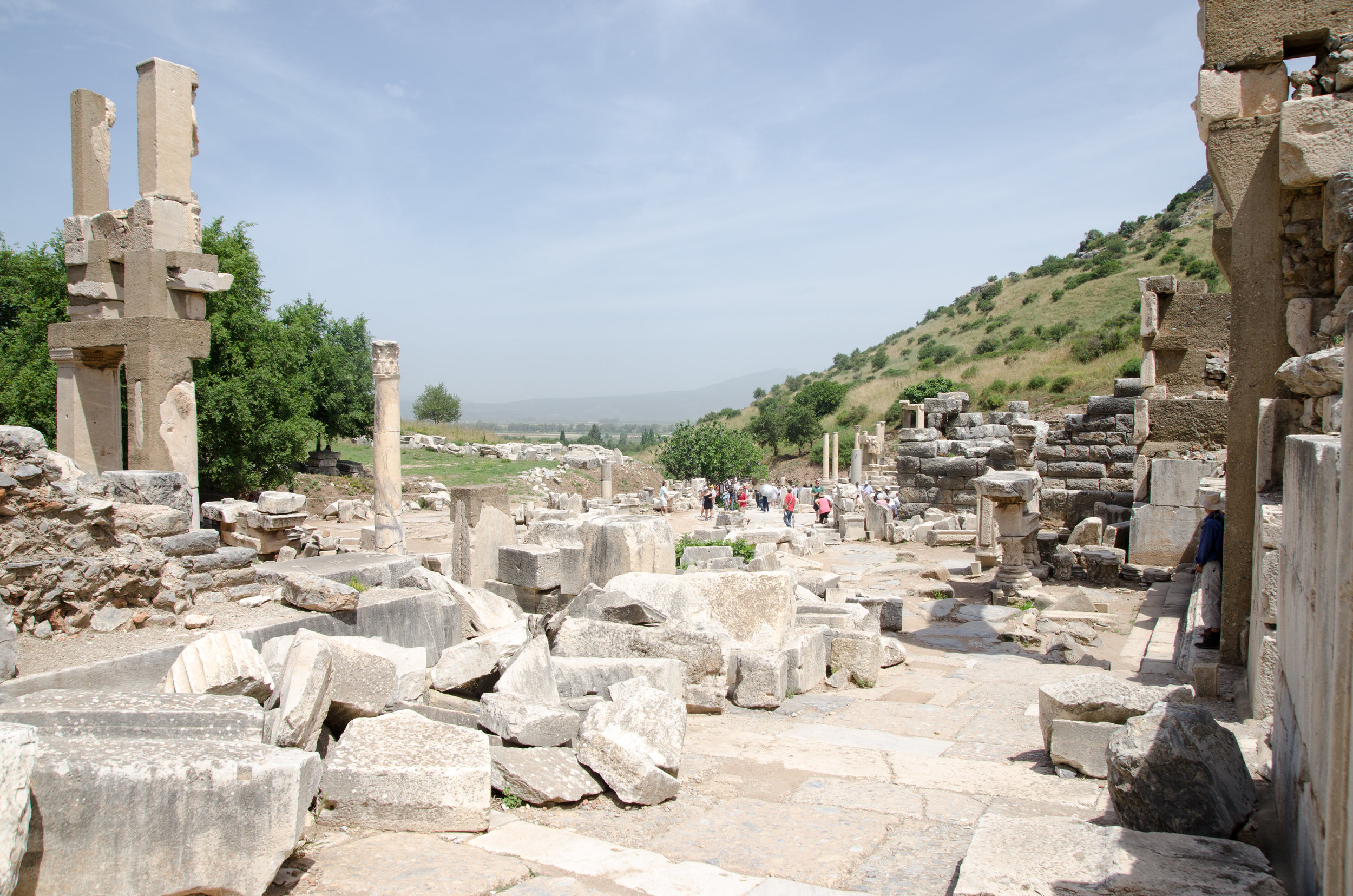
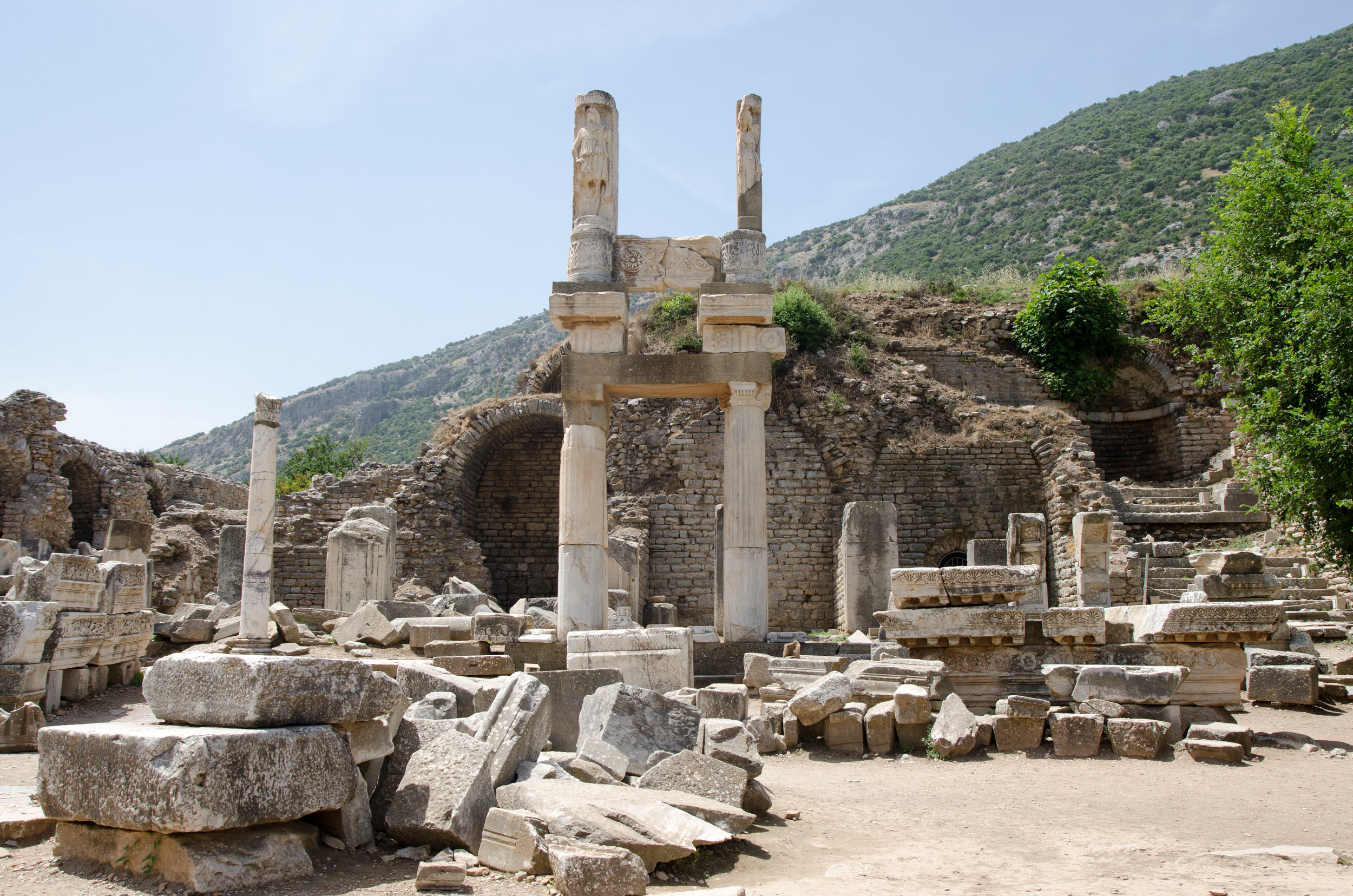
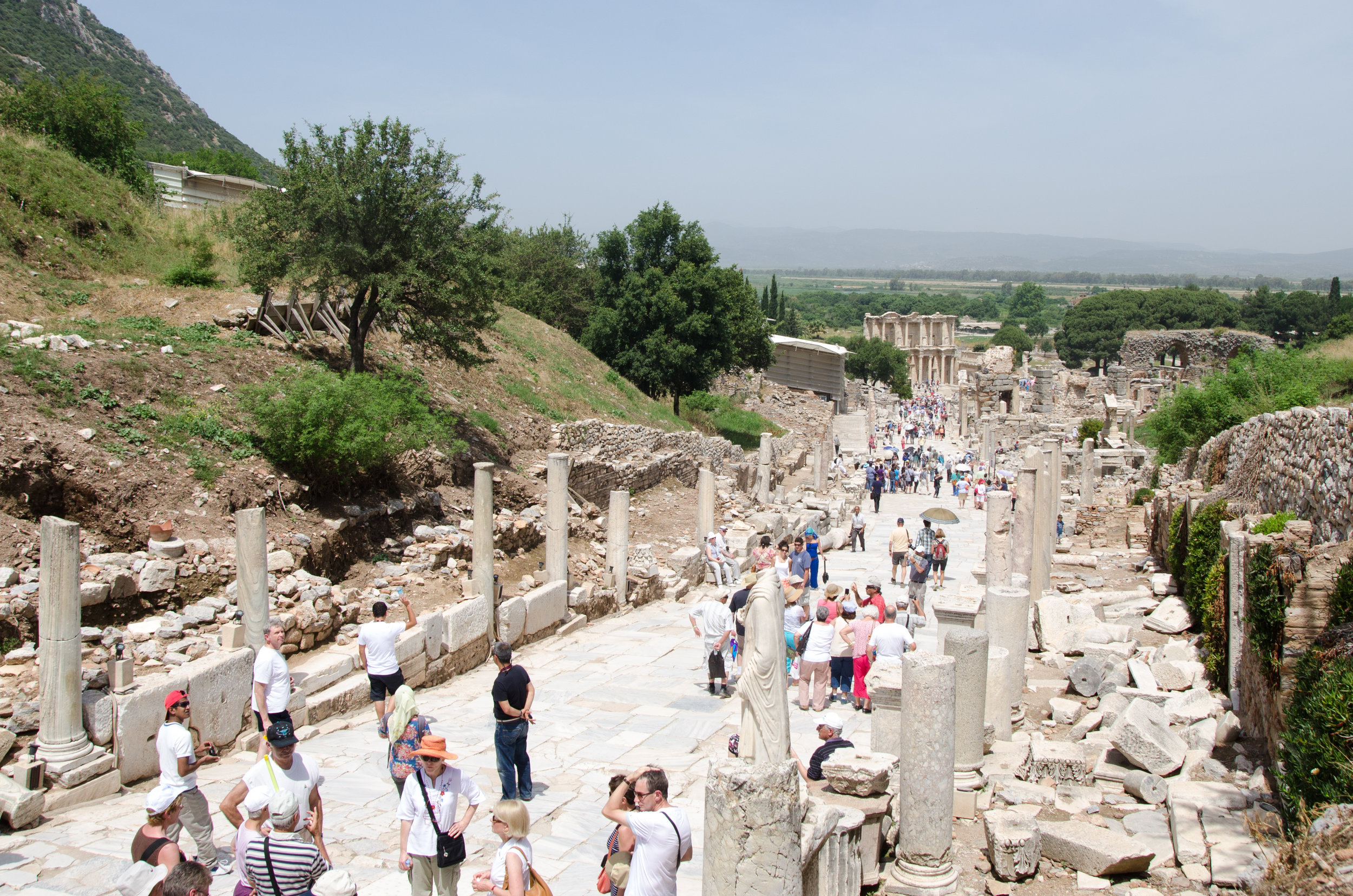
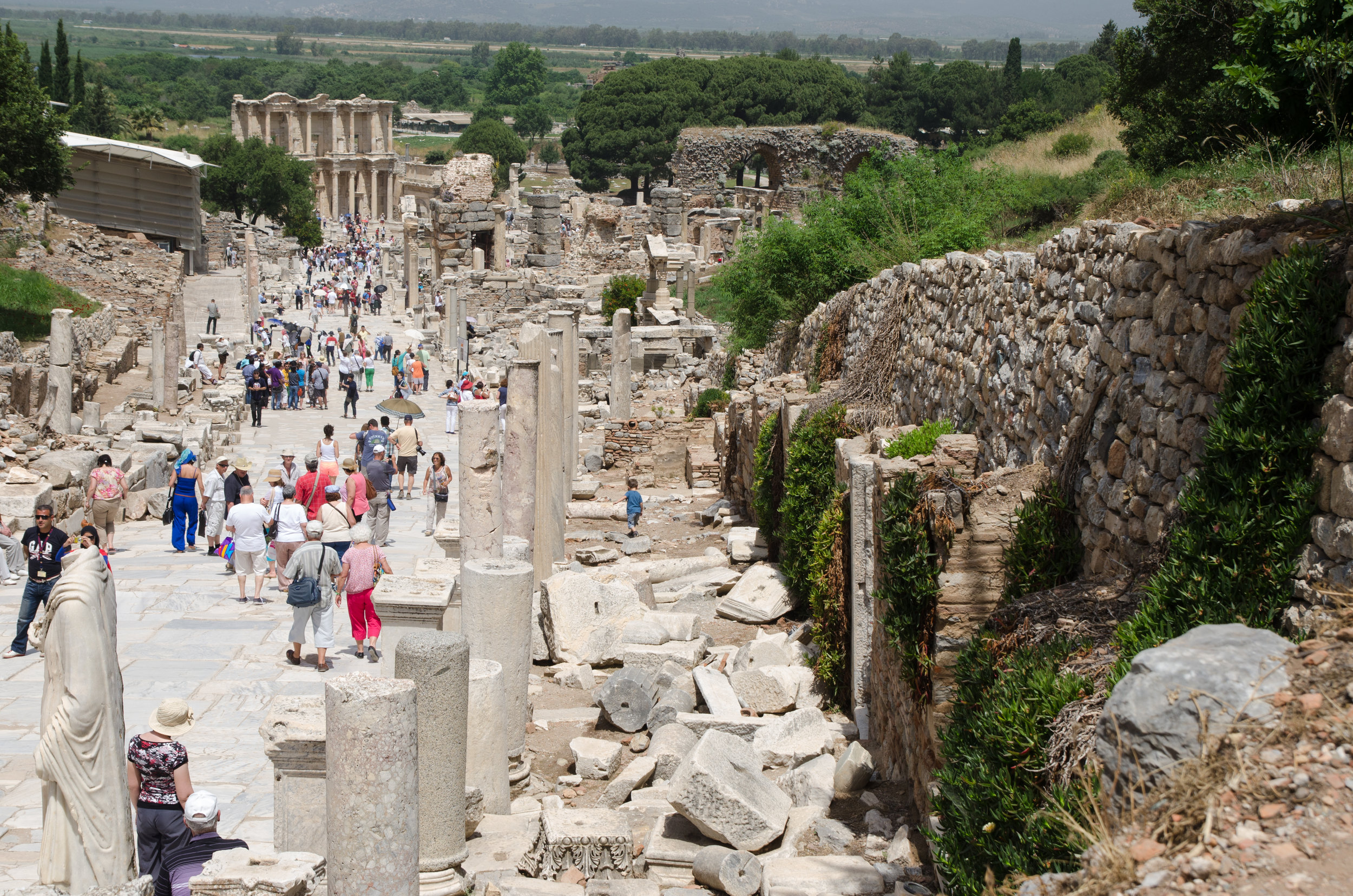
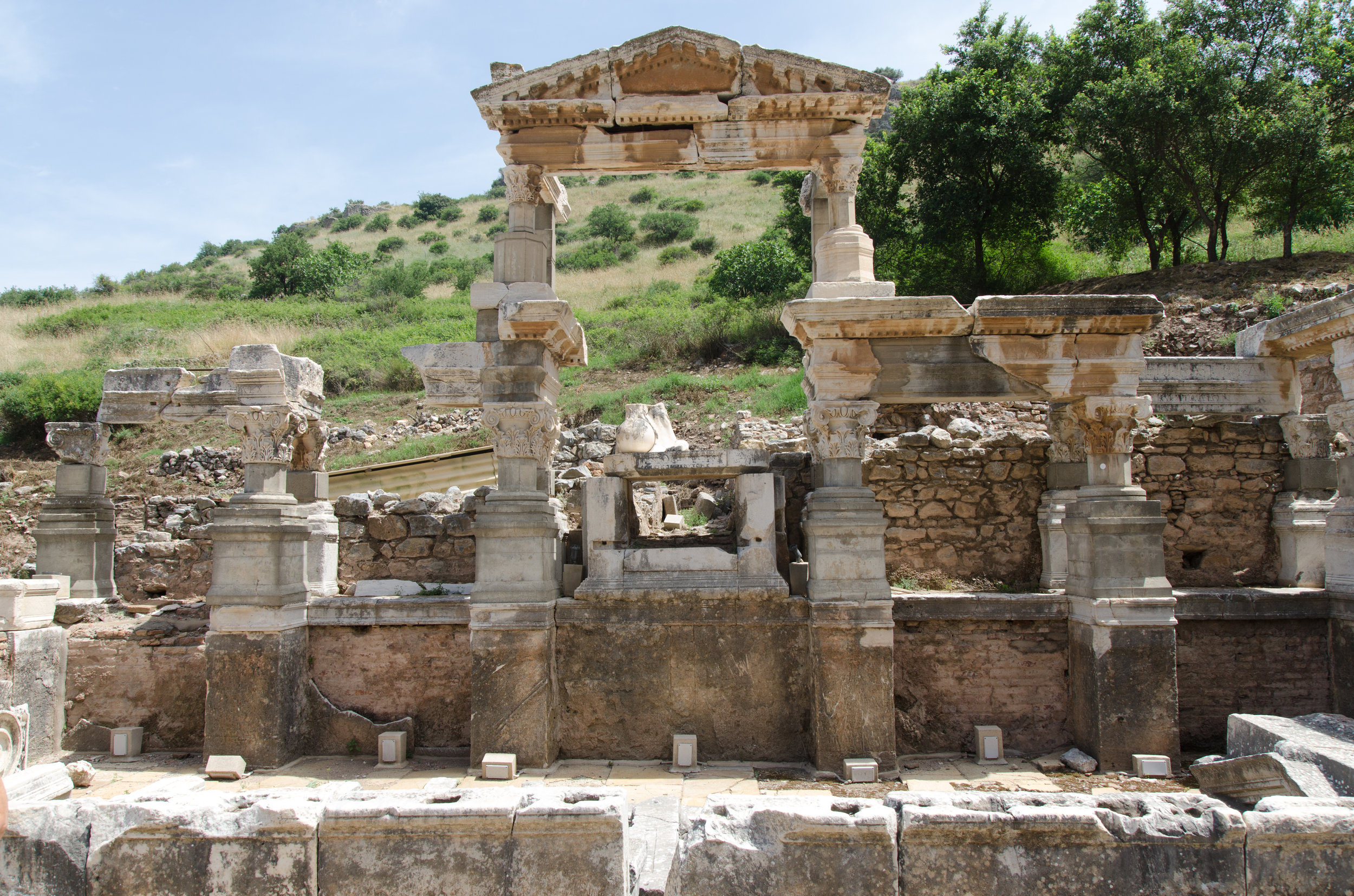

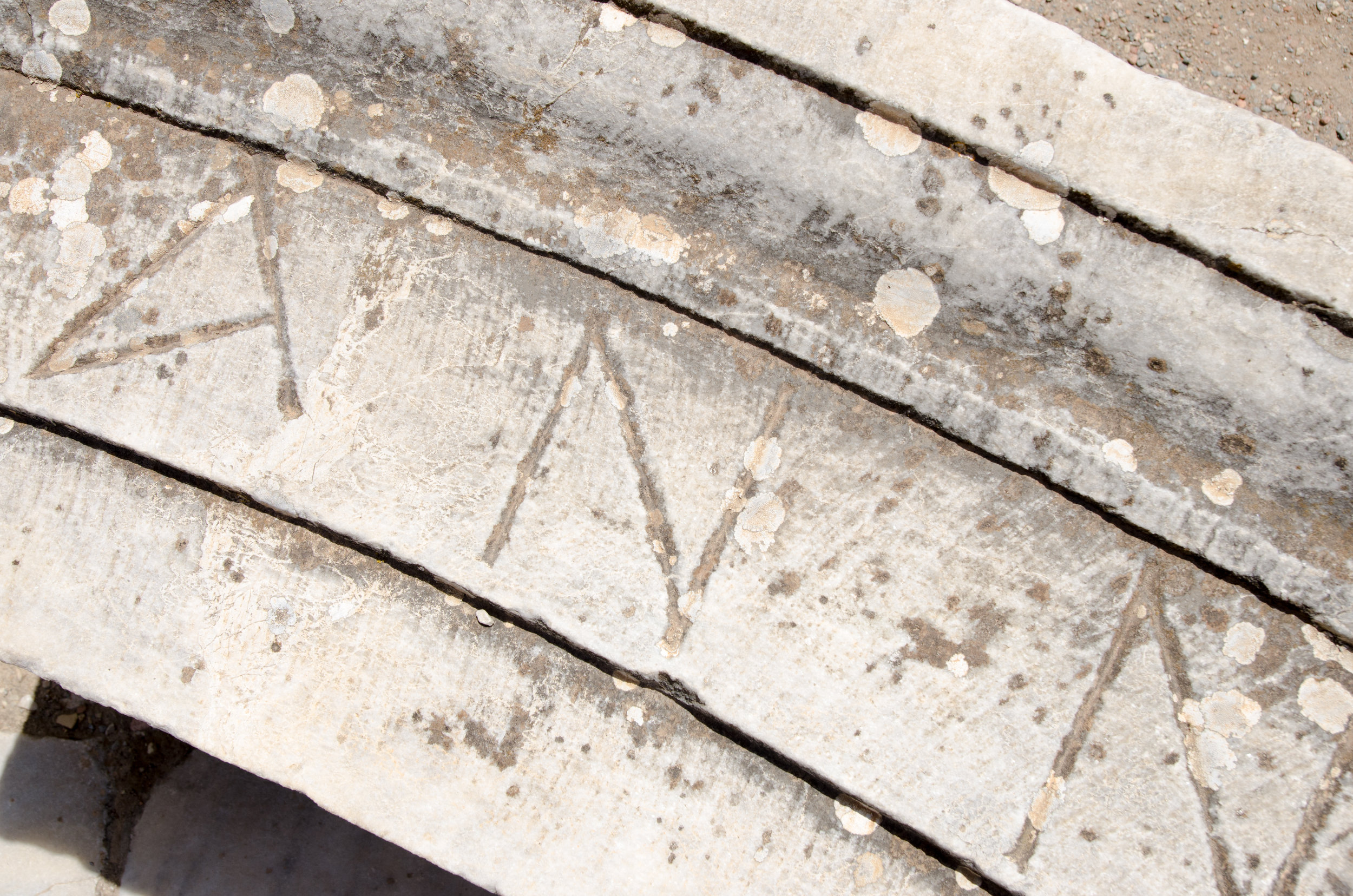
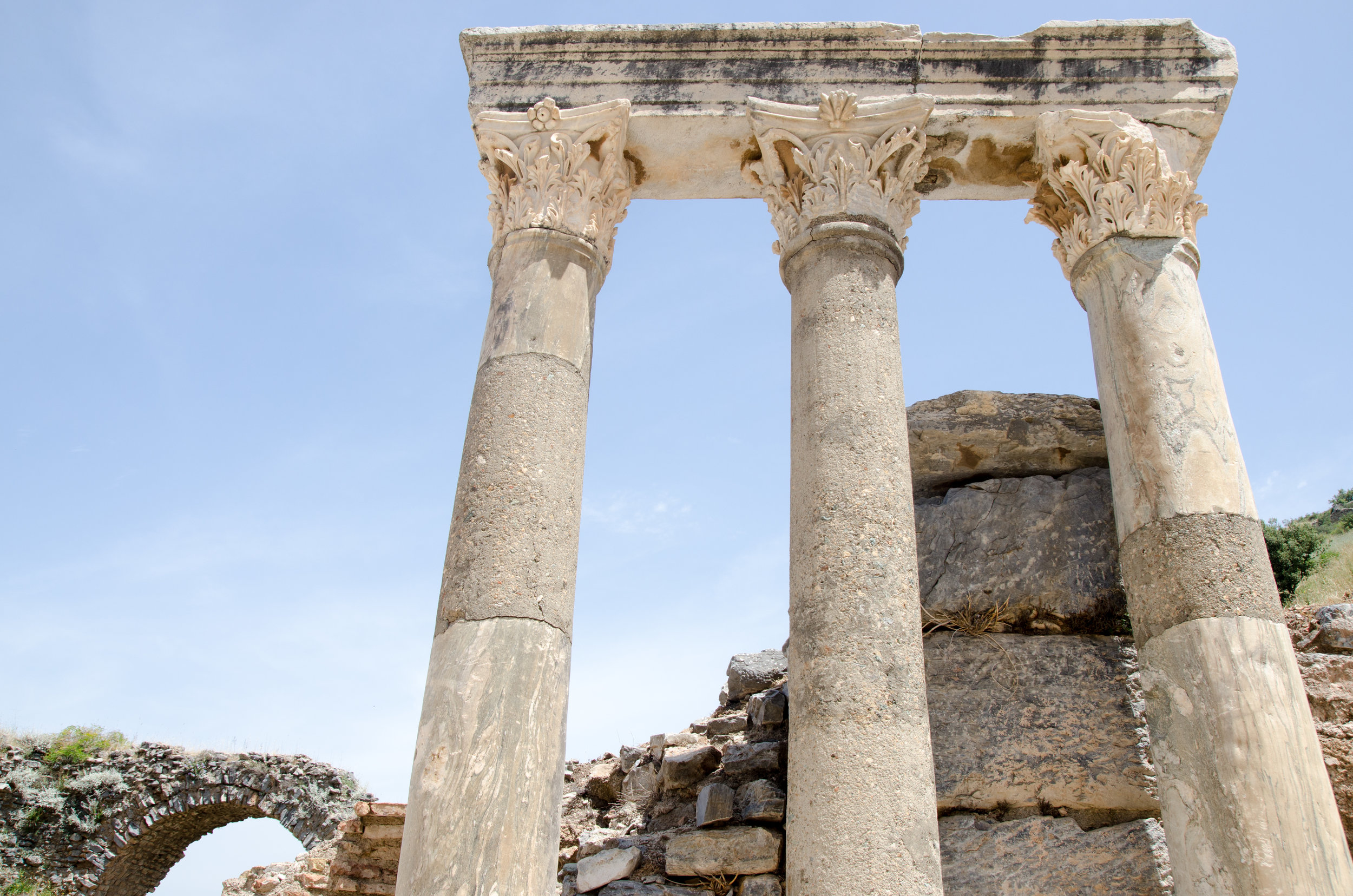
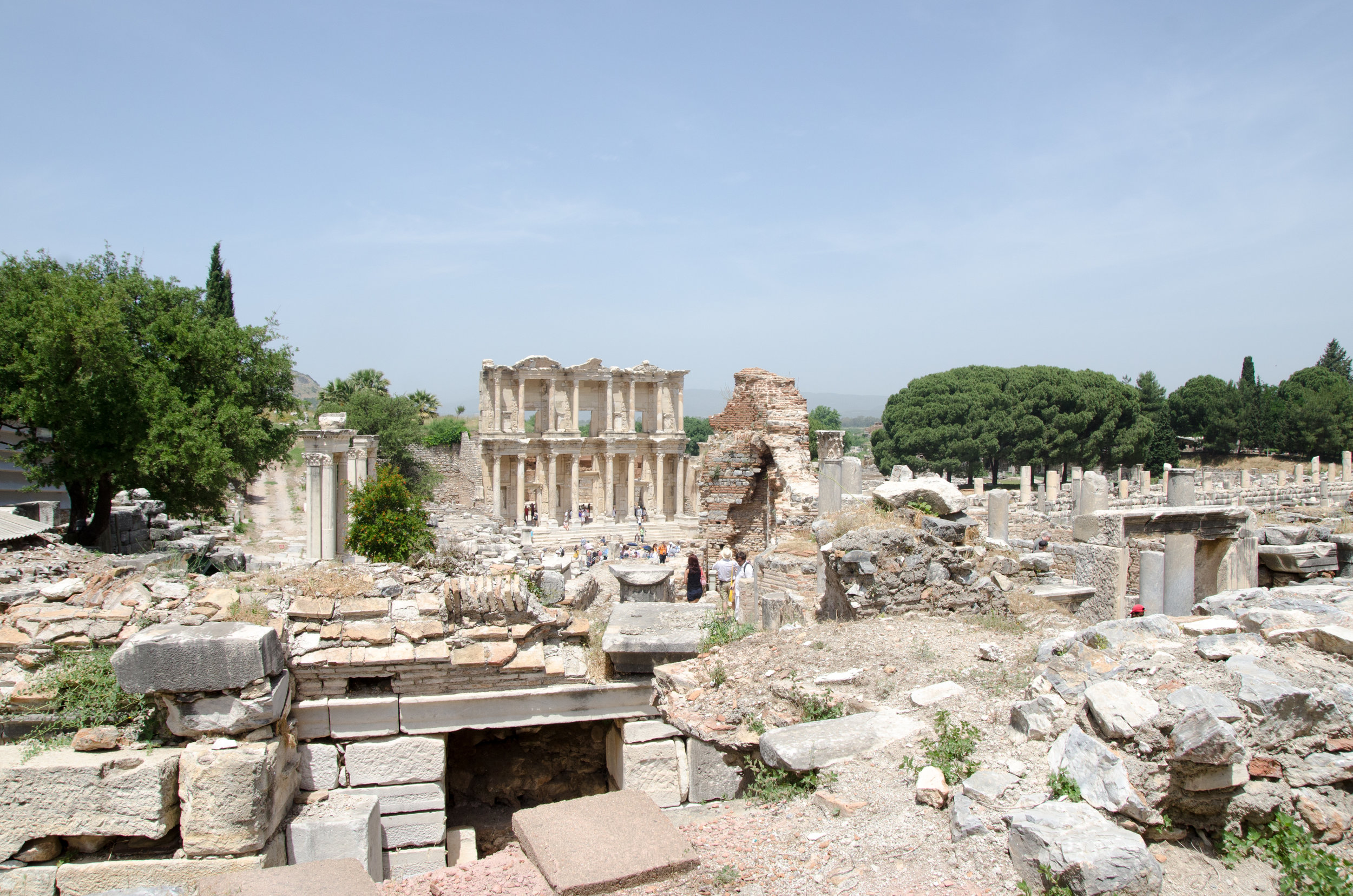
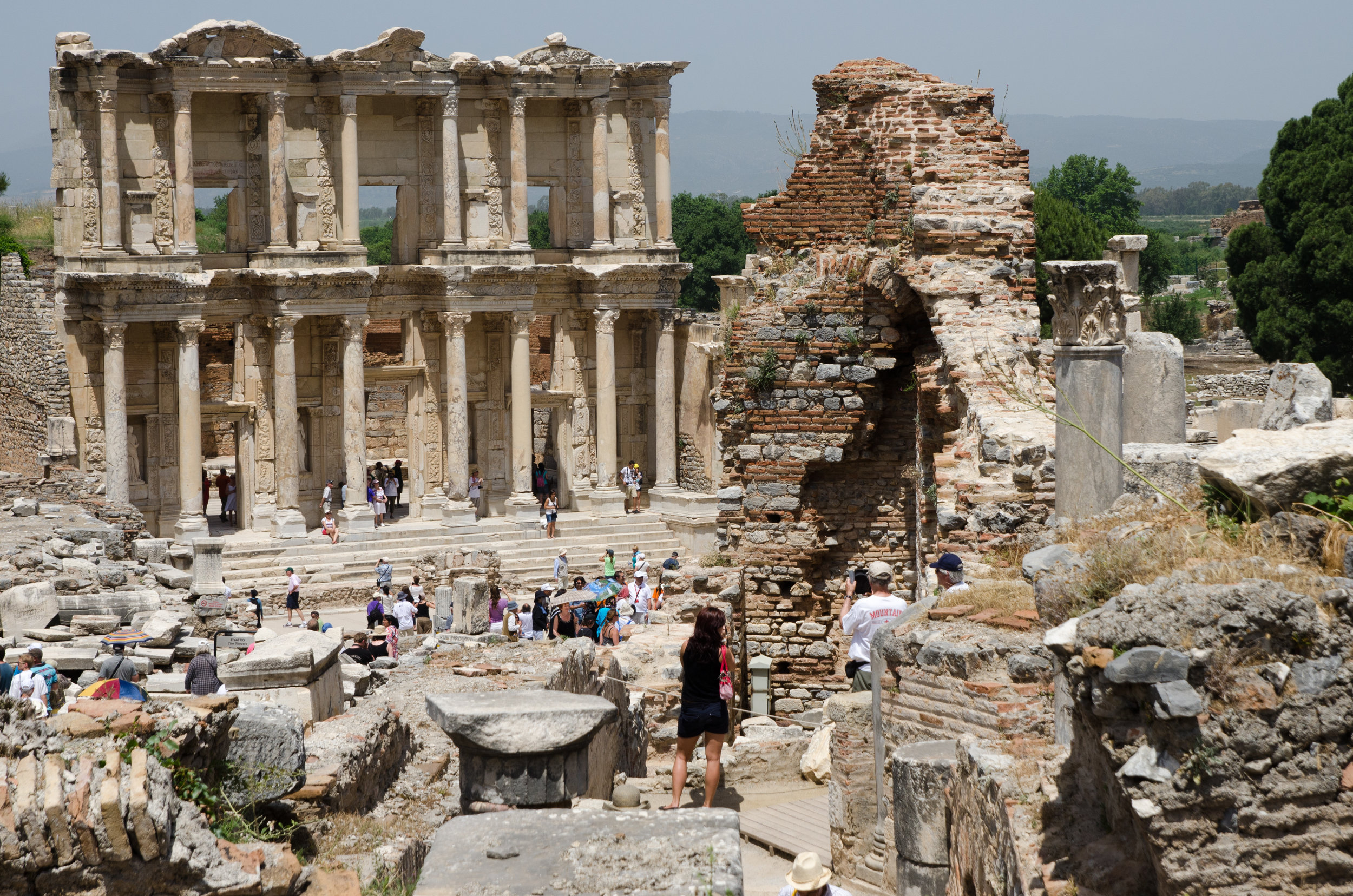
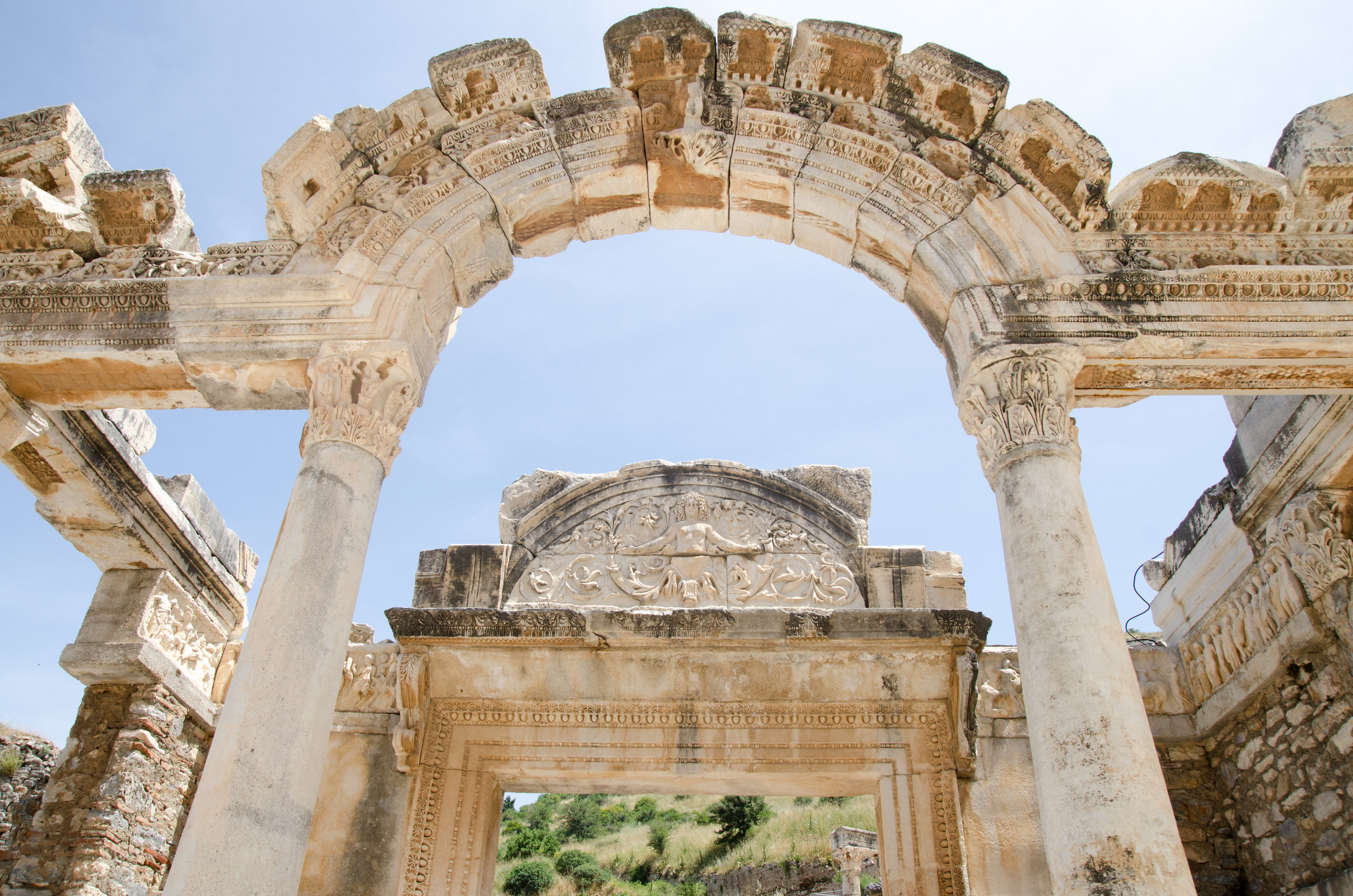
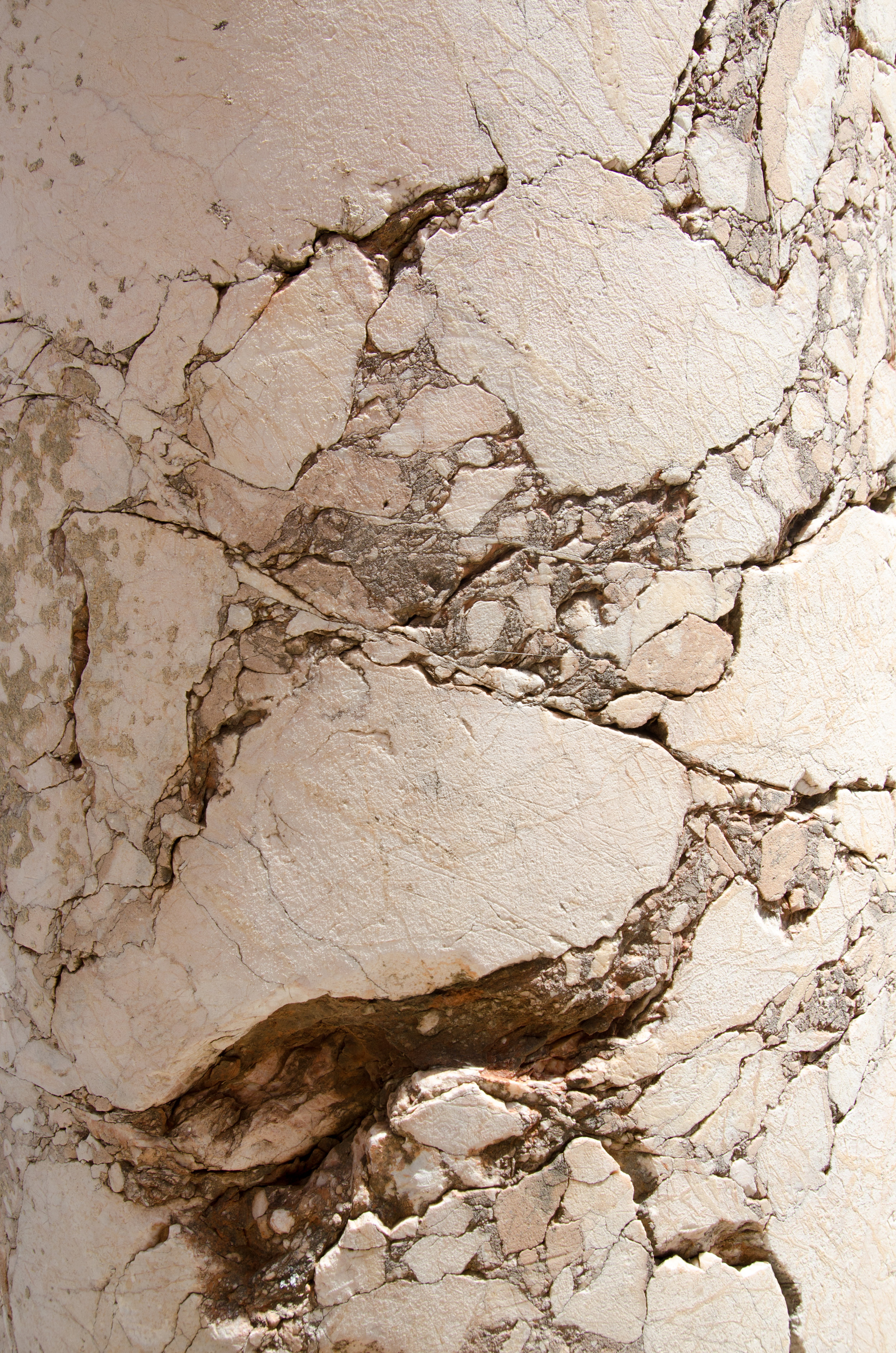
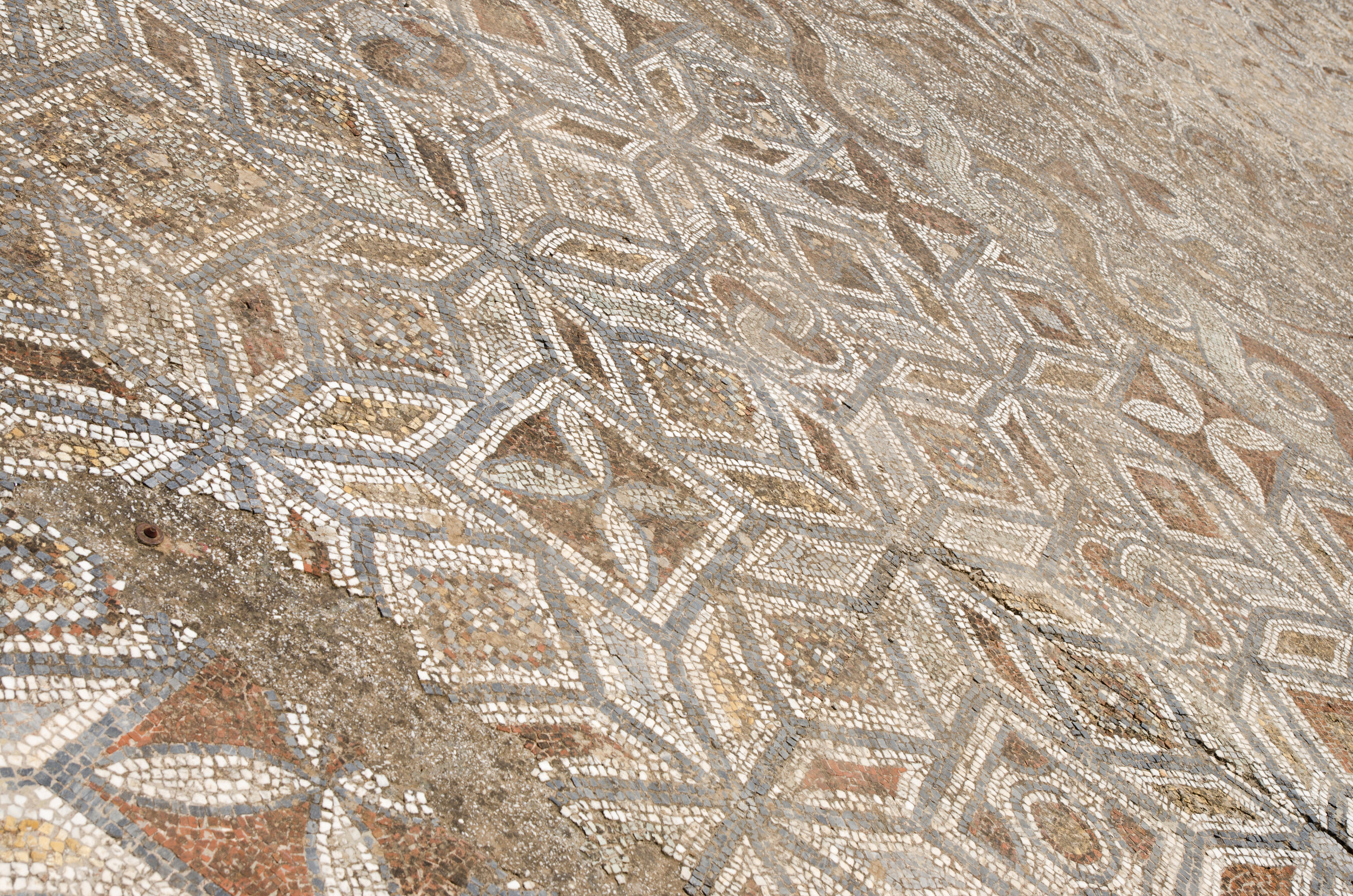
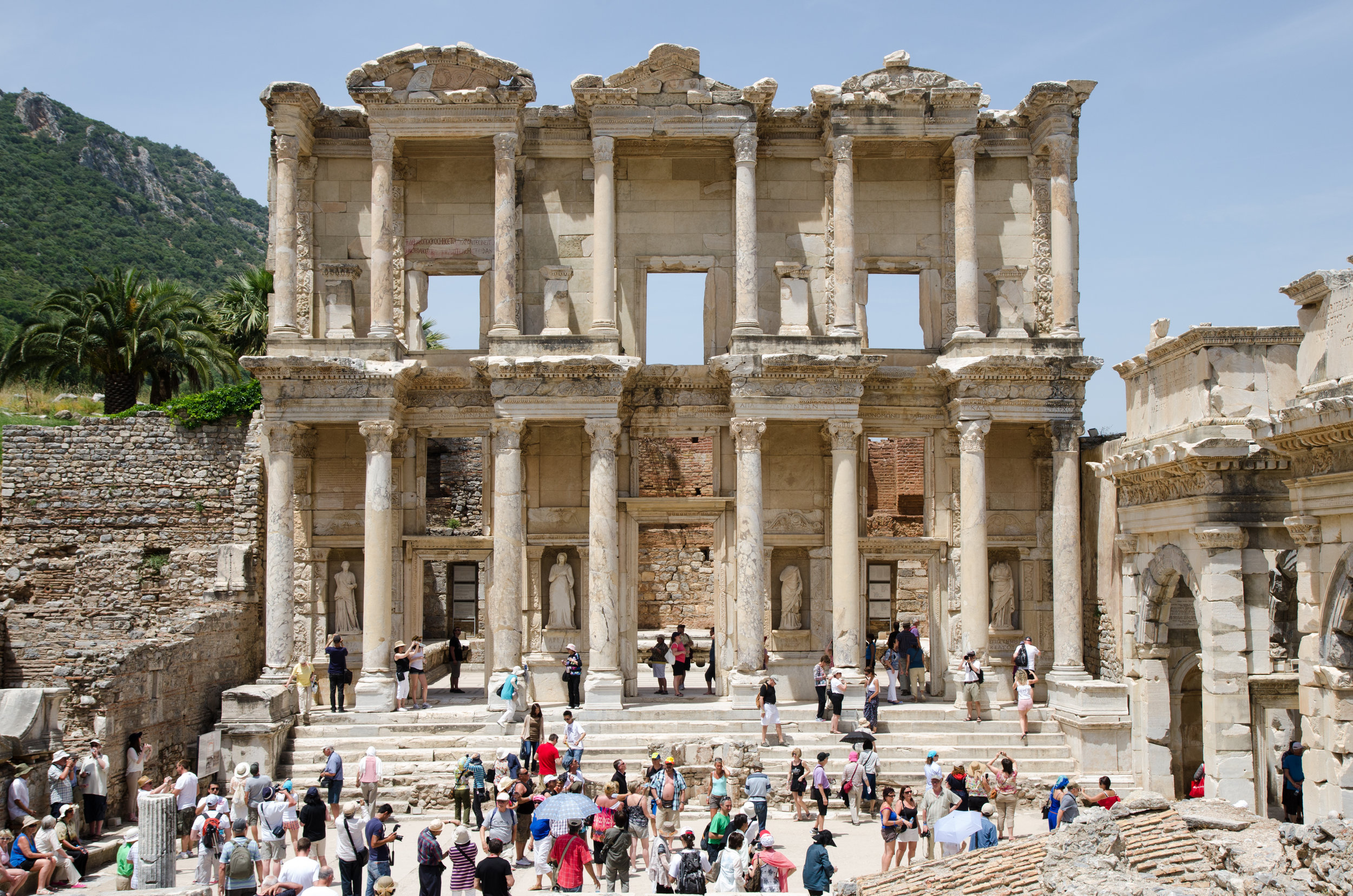


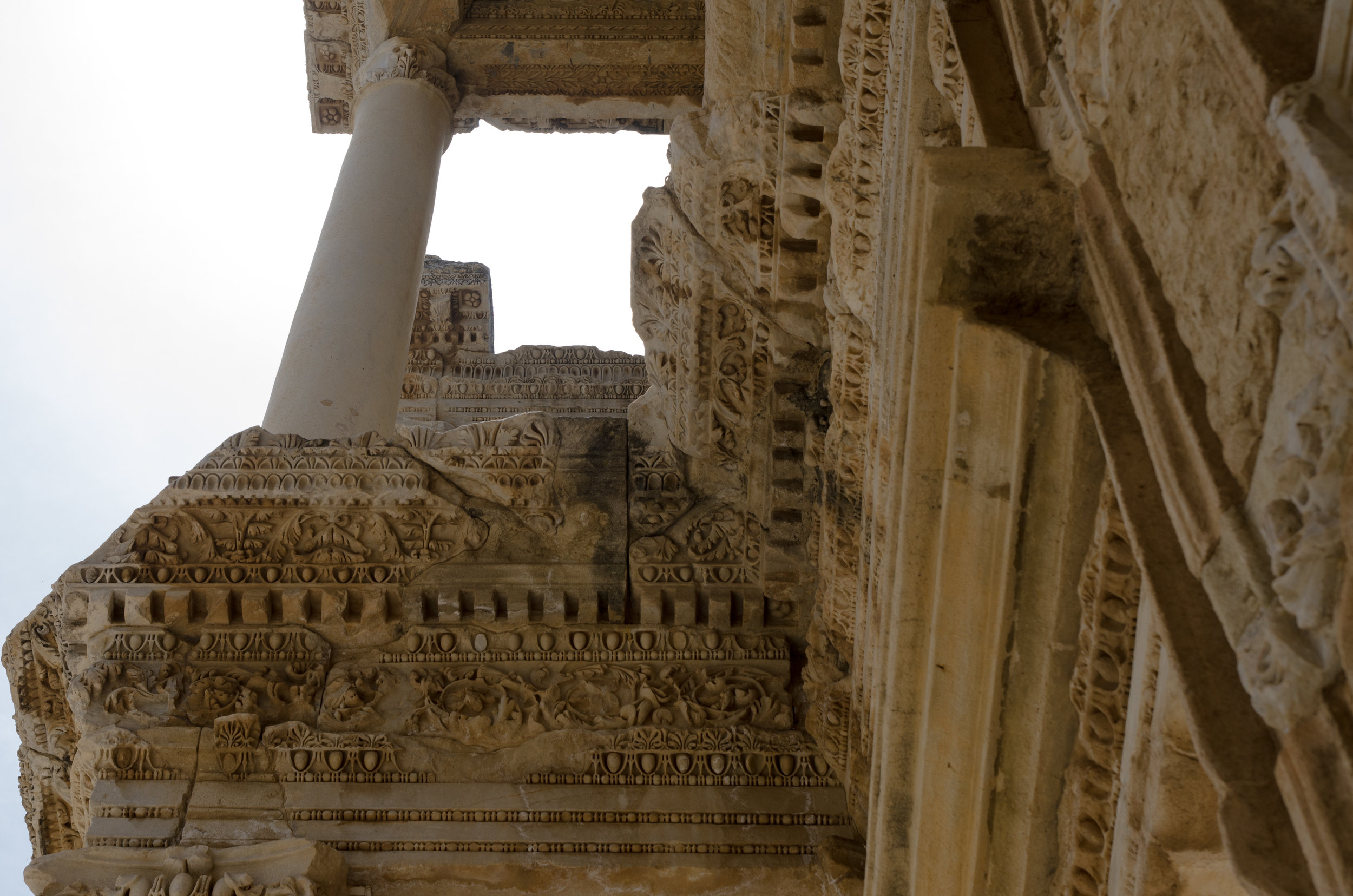
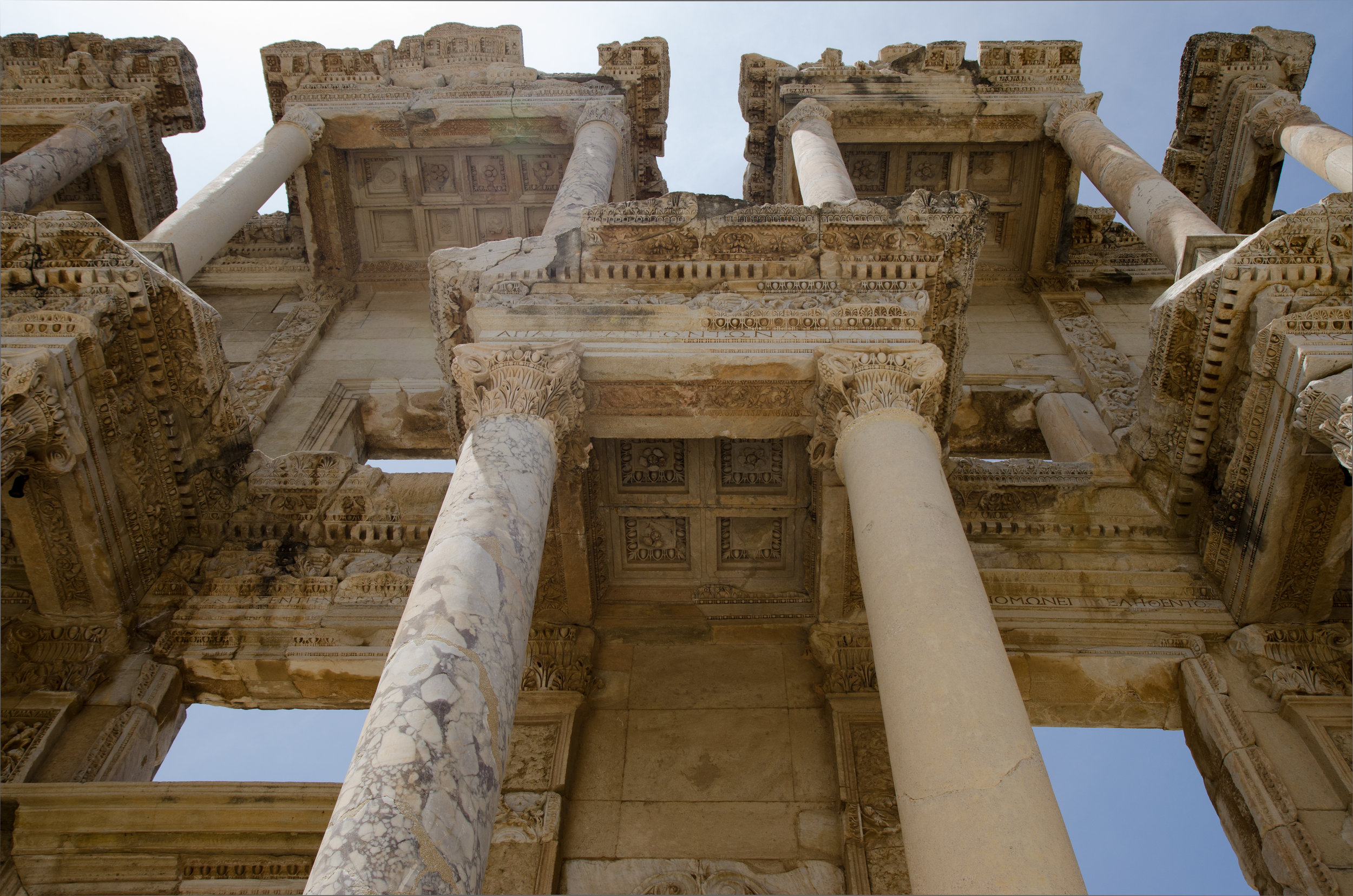
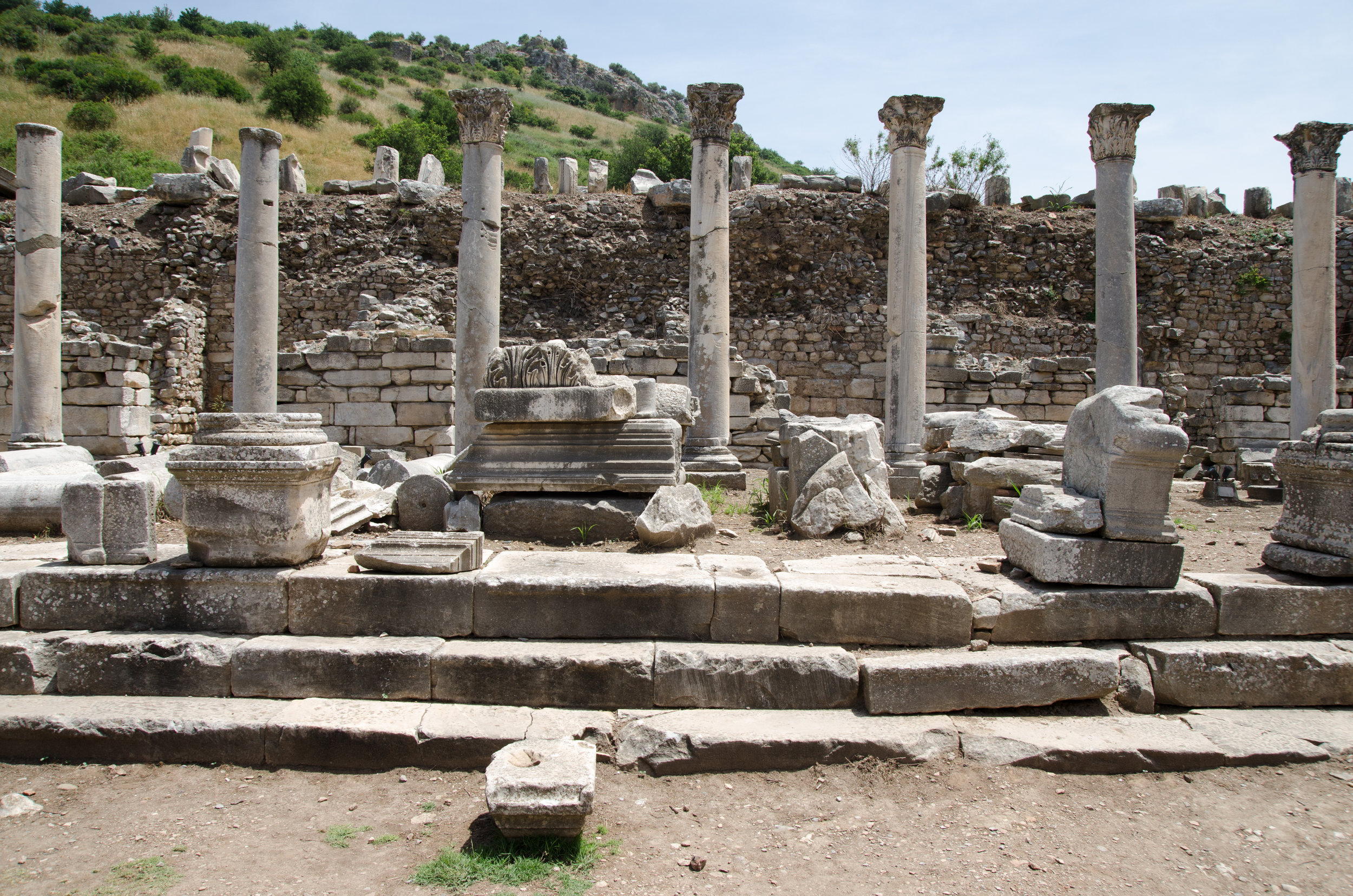
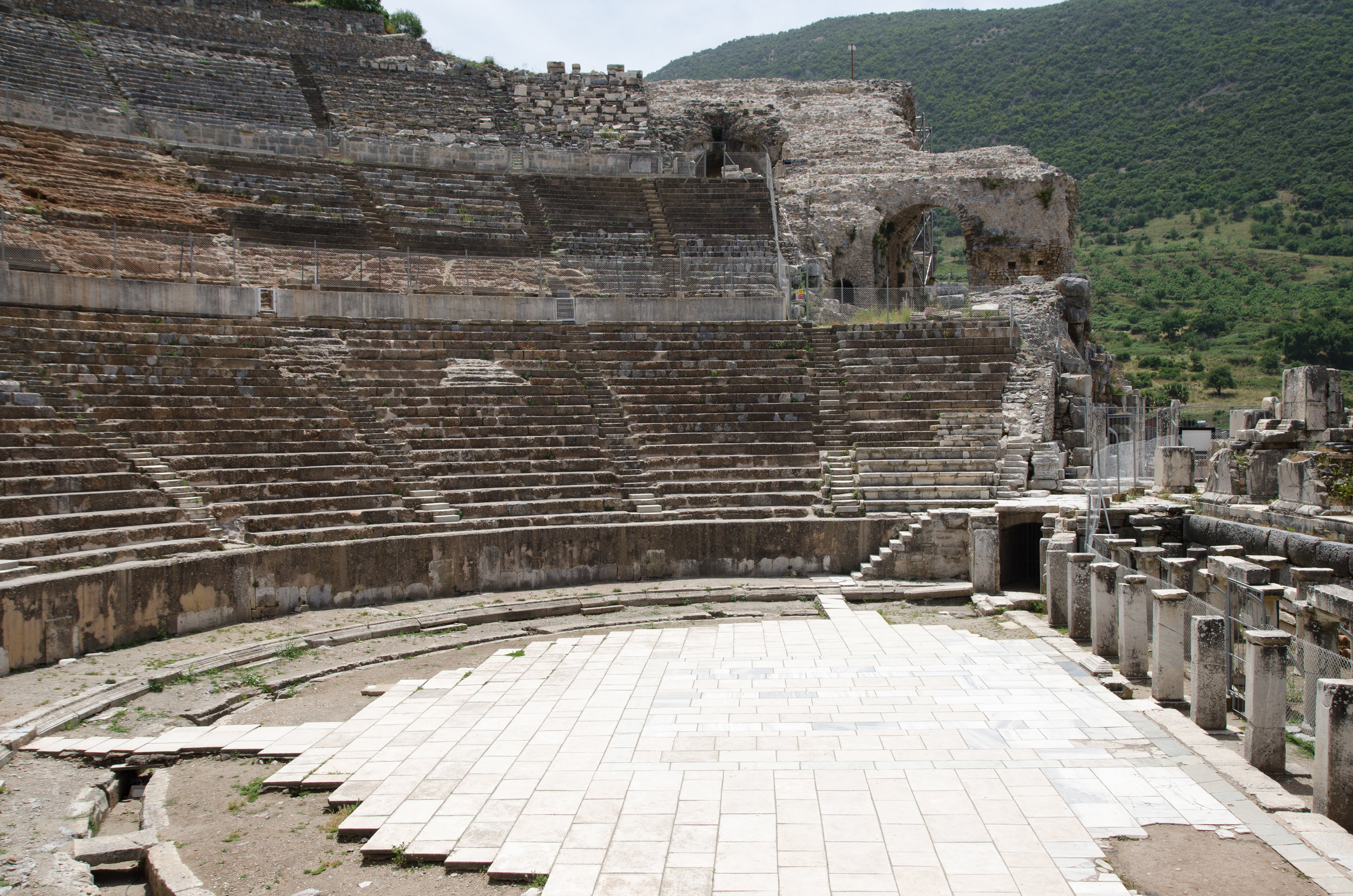
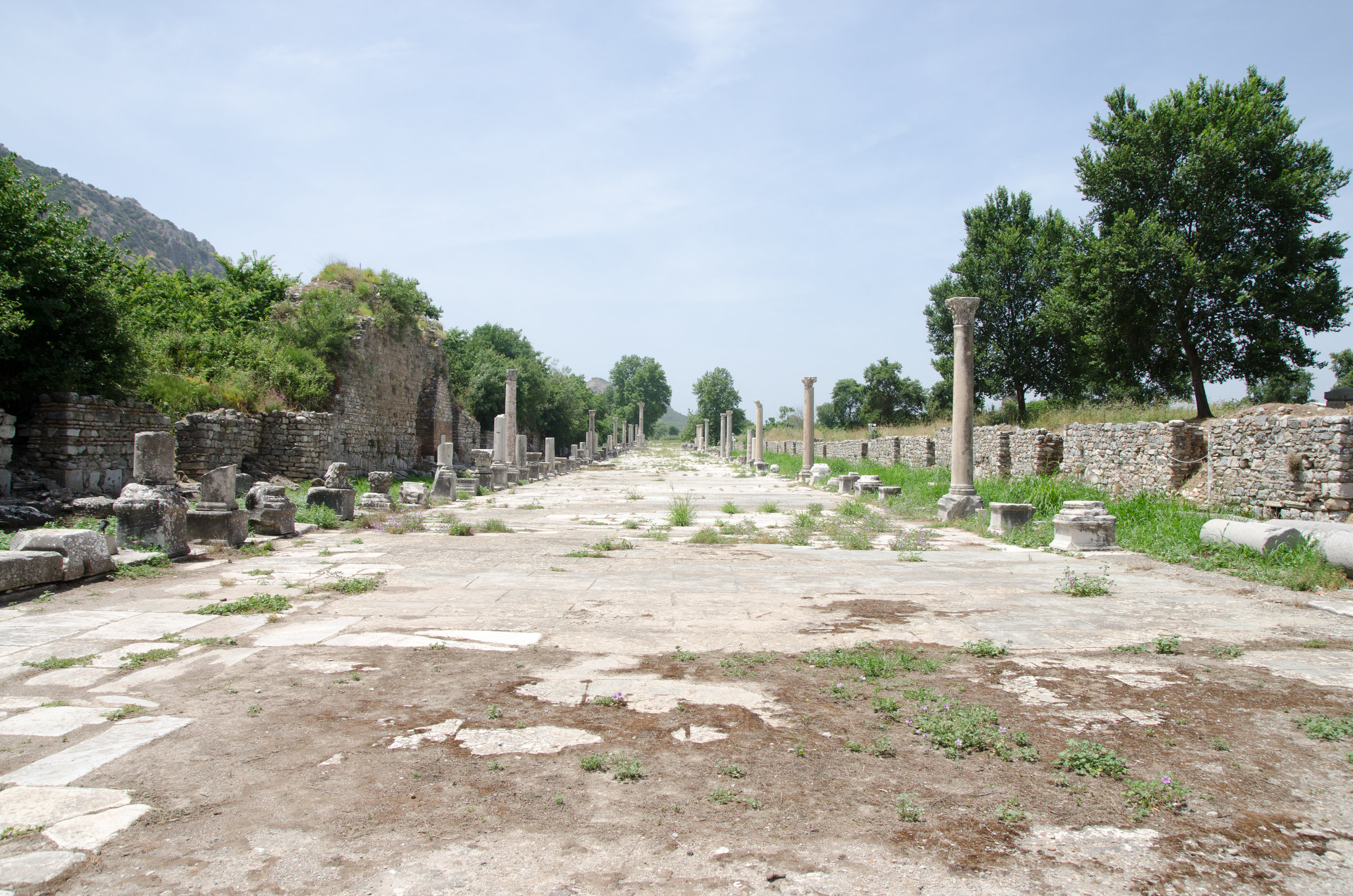
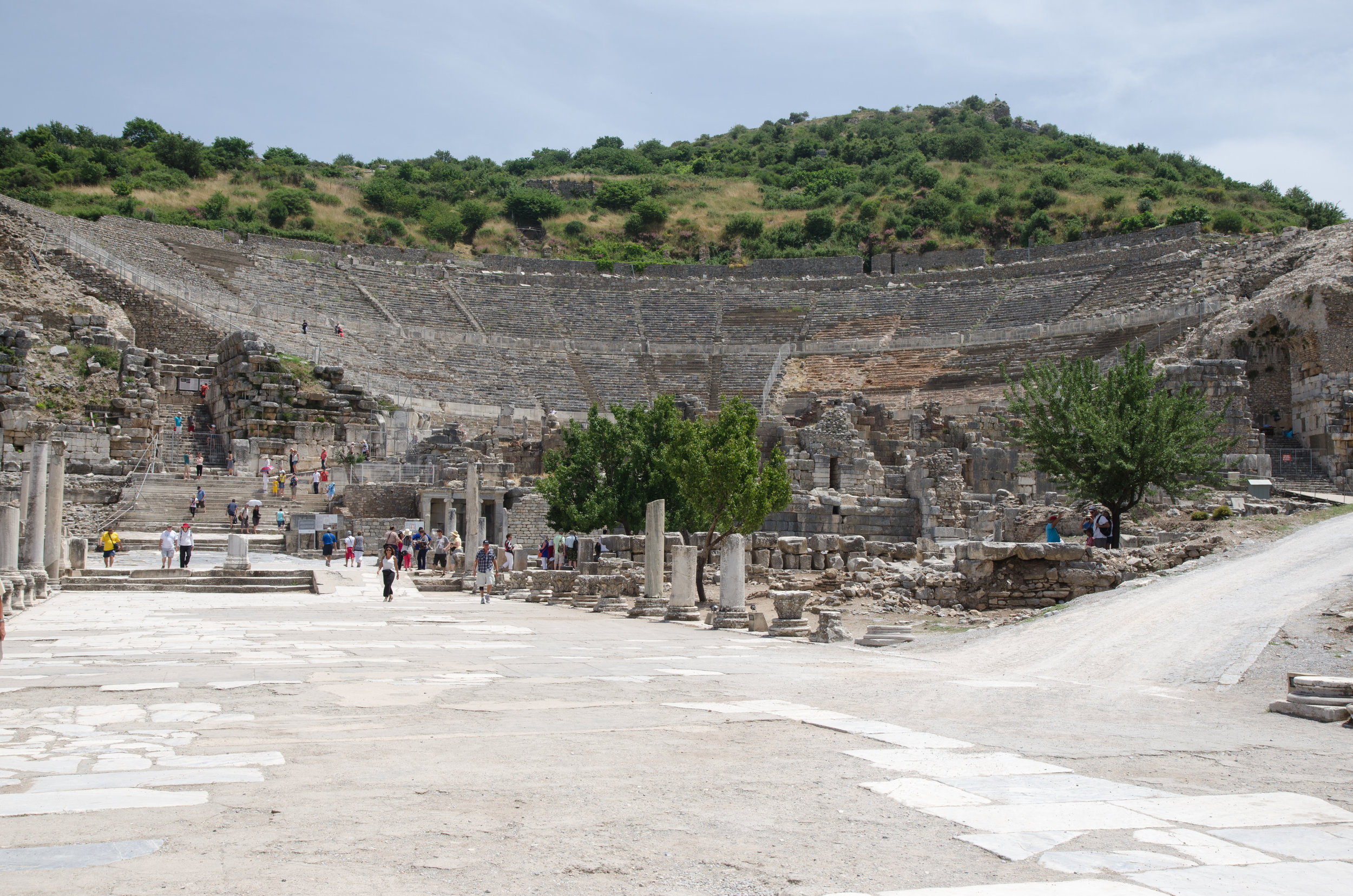
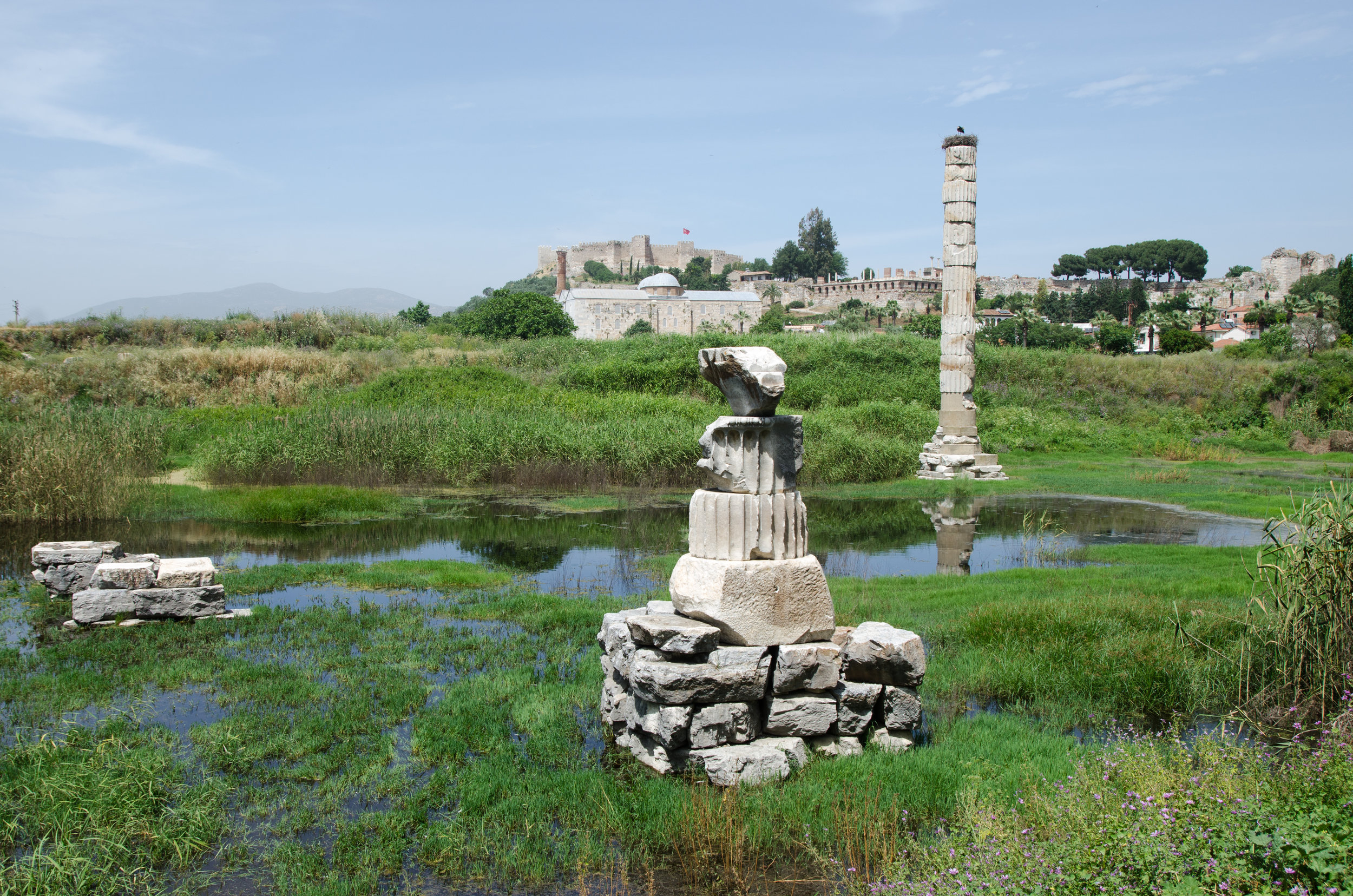
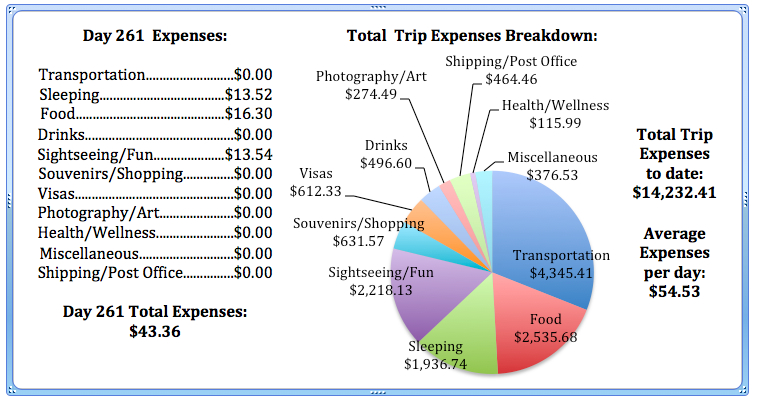
A woman at our guesthouse encountered a snake along the trail the day before, I think Andrew was relieved we only encountered a little turtle instead.
There’s a house of the Virgin Mary atop the hill outside of Ephesus. It’s believed she spent her last days there. We didn’t climb up the hill, but stopped at this statue for a picture. We had to wait for a few groups of American tourists to take their picture in front of the statue in certain groups of friends, then family, then friends AND family. They offered to take a picture of me and Andrew in front of the statue. I politely declined, insisting we already had a few pictures together…
This is where we sat for awhile. If it wasn’t so sunny and hot, we probably would have stayed longer. I love sitting and soaking up my surroundings and if there are many, I try to embrace the tourists around. There were a LOT of Americans and because we’ve encountered so few Americans on this trip, I wondered if this was their first time abroad (for some) and why Turkey (for others). I marveled at how easy Americans are to identify. We are a loud people. We tend to have a presence of making ourselves seen rather than allowing ourselves to see. We wear shorts. We wear flip flops. I don’t know if any of this makes any sense, but these are things you pick up on about “your people” in my case, my fellow Americans when you’ve been outside of America for so long.
Despite the heat and the throngs of tourists (still something we are adjusting to after being in countries with sparse tourism and/or few visitors) it was incredibly interesting to walk through. And as always, made me wonder what life must have been like when the city was in its heyday. For me, it’s the ancient times that seem so glamorous especially when the grandeur of the city is so immense like it was in Ephesus.
The most impressive part of the city was without a doubt, the library. I overheard a tour guide say that it has been rebuilt, but it seems to have been rebuilt rather well – without the use of obvious concrete like we saw in a few other parts of the ancient city.
Even when we walked out, it was through more ruins that you simply couldn’t believe were still standing and added to the size of the ancient city.
The ancient city also held the Temple of Artemis (one of the Seven Wonders of the Ancient World). This wasn’t within the current day grounds of Ephesus and we had to walk a few kilometers back towards Selcuk to see the singular remaining column of the ancient wonder. It was one of those “Wonder of the Ancient World… Check” moments and then we weaved our way back out to the road, dodging tour buses until we were back on the highway deciding to walk back to our guesthouse.
Our guesthouse was two kilometers outside of the city. We had already walked to Ephesus, then to Artemis… Walking all the way back to our guesthouse probably wasn’t the best idea, but we made it and then collapsed, yet again outside of the pool until dinnertime.

